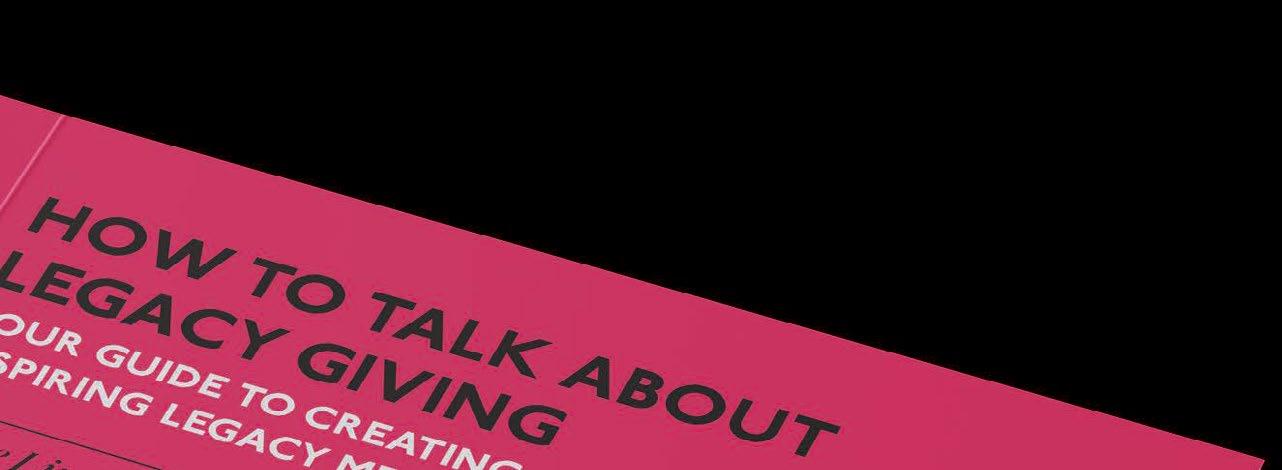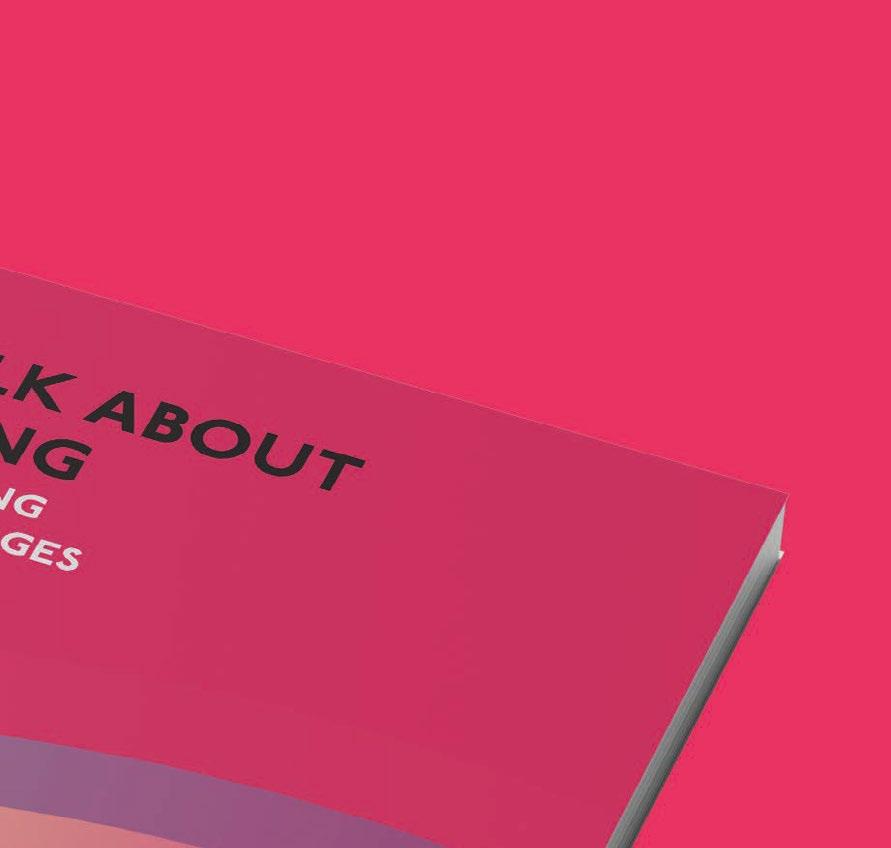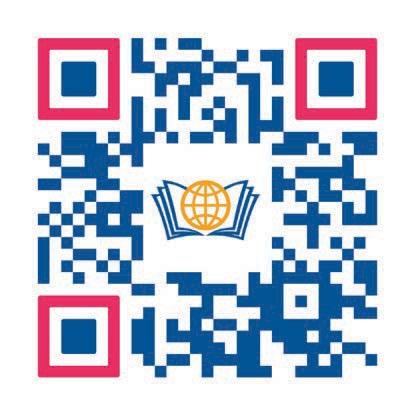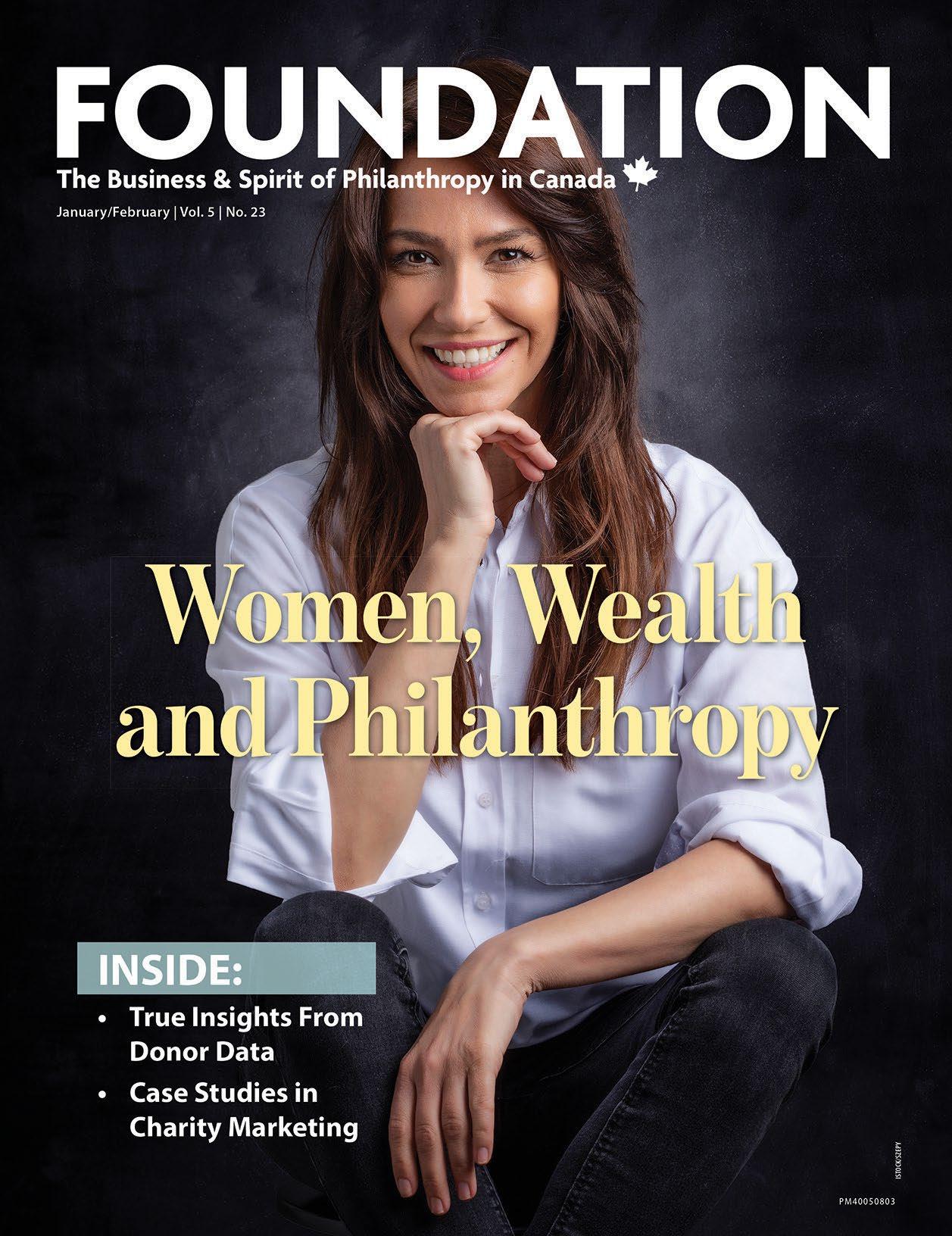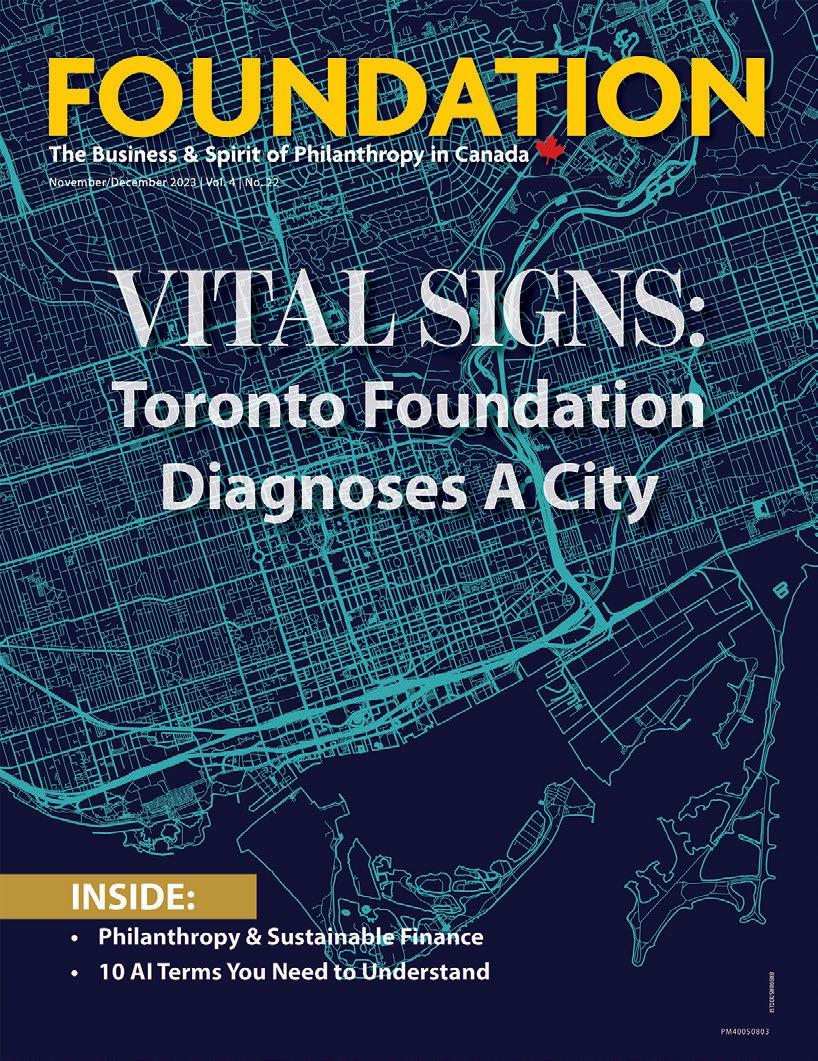
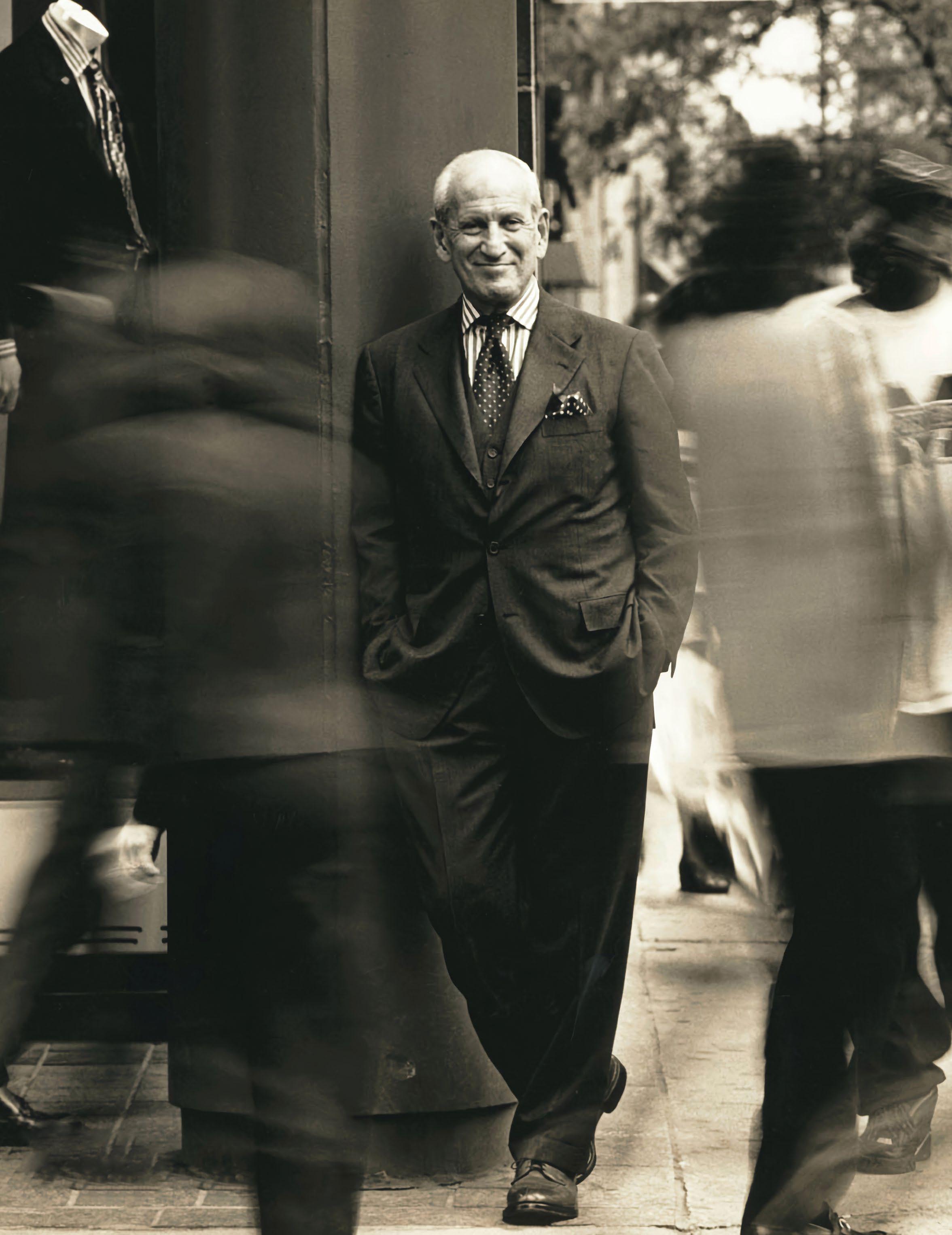



INSIDE:
•
•
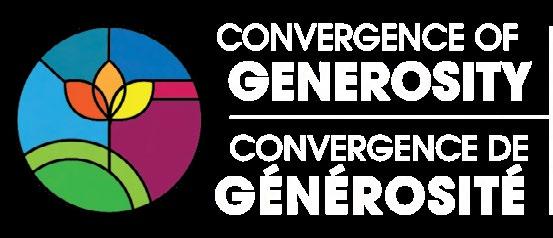



In early February 2024, Environment for the Americas hosted an extraordinary trip to Cuba that intertwined bird conservation with cultural immersion. Under the guidance of Joni Ellis, EFTA board member, the participants explored the island’s unique biodiversity. Among them was Diane Winter, once an integral part of the EFTA team and now a stalwart supporter. This was no ordinary excursion; it was an intimate yet mighty quest for conservation and connection.
Beginning in Holguin and progressing to the town of Gibara, a hotspot for bird migration, participants confronted the stark reality of illicit bird trapping. Local conservationist, Ailen Anido Escalona, stressed the importance of dissuading youth from these practices.
With the partnership of Optics for the Tropics, EFTA distributed educational gifts, including 144 T-shirts and many sets of binoculars, to ignite a conservation spark in the local children.

Endemic. Status Near threatened. Local name Zunzuncito. The Bee Hummingbird is the smallest bird in the world – only 1.2 inches from the bill to the tail. It weighs less than a dime. Male and females are quite distinct from each other. They are not easy to spot. Its wings beat 80 times per second, and up to 200 times per second during courtship displays. Its heart rate is the second-fastest of all animals. Its body temperature is 104°F, the highest of all birds. Zunzuncitos migrate locally based on availability of flowers. Learn more about the delightful Bee Hummingbird.
In Gibara, the state of disrepair of the Natural History Museum after hurricanes spurred proactive measures. Spearheaded by Diane and Ailen, a restoration mission is underway that transcends simple repairs, pledging to rejuvenate a cultural institution.
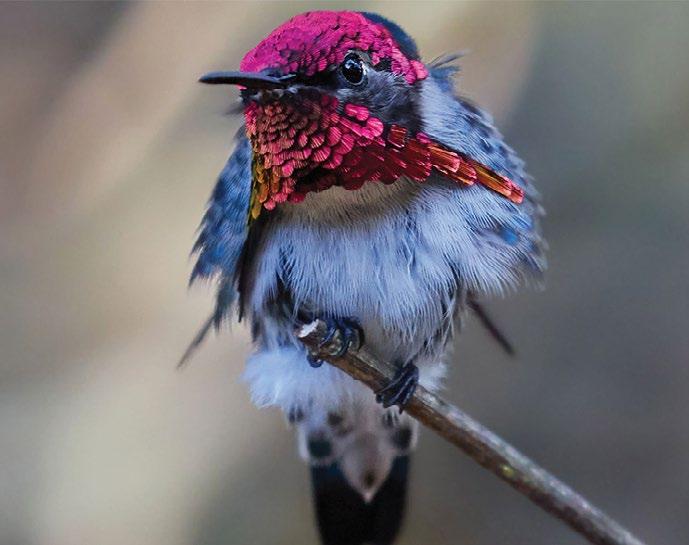
Adventuring onward to Baracoa, the expedition deepened its cultural ties, consulting with the Baracoa Birding Club’s leaders, Roberto Jove and Noel Coutin Lobbing. Attendees were treated to the ancient tales of the Taino Indians during a visit to an archaeological museum nestled inside a cave.
Our last stop, Santiago’s Casa de Trova, is the heart of Cuba’s vibrant culture, where traditional music and dance intertwine. Our exploration in Cuba concluded at a distinctive crossroads of nature and nurture, highlighting the importance of collaboration in preserving both cultural and natural heritages.
A journey of challenges and victories left a sense of hope over Cuba’s eastern coast, showing how united efforts can create ripples in conservation and cross-cultural harmony.
Environment for the Americas connects diverse people to birds and nature and inspires the next generation of conservationists by connecting diverse people to nature and to the protection of birds and their habitats. Interested in joining us on our upcoming international trip? Become an EFTA Member and keep an eye on our events page.
March/April 2024 | Vol. 5 | No. 24 www.foundationmag.ca
Twitter: @foundationmaga1
PRESIDENT / EDITOR-IN-CHIEF
Steve Lloyd - steve.lloyd@lloydmedia.ca
DESIGN / PRODUCTION
Jennifer O’Neill - jennifer@dmn.ca
PHOTOGRAPHER
Gary Tannyan
CONTRIBUTING WRITERS
Mary Cahalane
Dr. Megan Conway
Dawn Fell
Laurie Fox
Dr. Michele Fugiel Gartner
Mark Halpern
LLOYDMEDIA INC.
George Irish Leanne Kaufman
Sara Krynitzki
Kathleen A. Provost Christine Trauttmansdorff
Lois Tuffin
HEAD OFFICE / SUBSCRIPTIONS / PRODUCTION:
302-137 Main Street North
Markham ON L3P 1Y2
Phone: 905.201.6600
Fax: 905.201.6601 Toll-free: 800.668.1838
EDITORIAL CONTACT:
Foundation Magazine is published bimonthly by Lloydmedia Inc.
Foundation Magazine may be obtained through paid subscription. Rates:
Canada 1 year (6 issues $48) 2 years (12 issues $70)
U.S. 1 year (6 issues $60) 2 years (12 issues $100)
Foundation Magazine is an independently-produced publication not affiliated in any way with any association or organized group nor with any publication produced either in Canada or the United States. Unsolicited manuscripts are welcome. However unused manuscripts will not be returned unless accompanied by sufficient postage. Occasionally Foundation Magazine provides its subscriber mailing list to other companies whose product or service may be of value to readers. If you do not want to receive information this way simply send your subscriber mailing label with this notice to: Lloydmedia Inc. 302-137 Main Street North Markham ON L3P 1Y2 Canada.
POSTMASTER:
Please send all address changes and return all undeliverable copies to:
Lloydmedia Inc. 302-137 Main Street North Markham ON L3P 1Y2 Canada
Canada Post Canadian Publications
Mail Sales Product Agreement No. 40050803
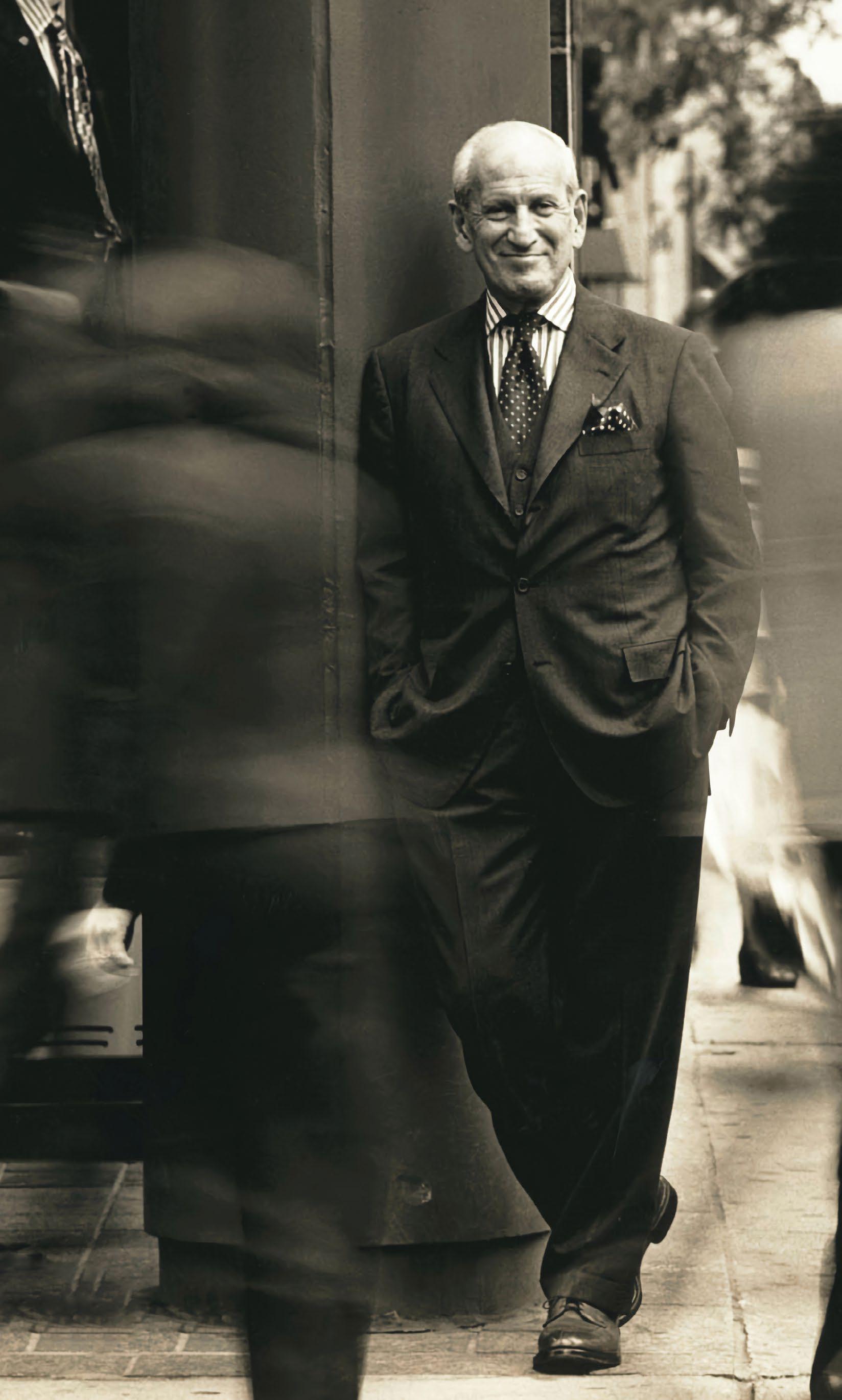
Harry Rosen, founder of the eponymous Canadian luxury menswear retailer, passed away at the age of 92. Rosen set himself apart with an unmatched focus on customer service, keeping detailed notes on individual style preferences and life happenings. An active member of many charitable foundations, Harry Rosen’s passion for family and community was unrivaled. Rosen was active in the Canadian Paraplegic Association, Corporate Fund for Breast Cancer, Cancer Care Fund, Mount Sinai Friends for Life Campaign, Metropolitan University board of governors, George Brown College board of governors, and the University of Western Ontario board of governors. He served a three-year term as campaign chairman for the Canadian Cancer Society, Metropolitan Toronto. He served on the Mount Sinai Hospital board of governors, (the then) Ryerson B.Com program in retailing advisory board, and on the cabinet of Major Individual Gifts for the United Way of Canada. He appeared in a promotional campaign for the Centre for Addiction and Mental Health to promote services for those affected by addiction and mental health issues in the Toronto area. In April 2010 he was honoured at a fundraising event for the University Health Network called “Hats Off To Harry”. It was one of his chief honours to have been welcomed into the Order of Canada in 2004; the Order’s snowflake pin adorned his lapel each day for nearly 20 years. We honour him by putting him on this issue’s cover as an example of gift planning, legacy and generosity.




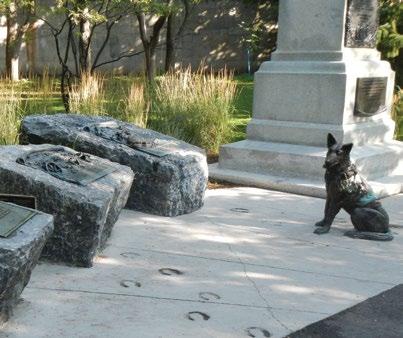
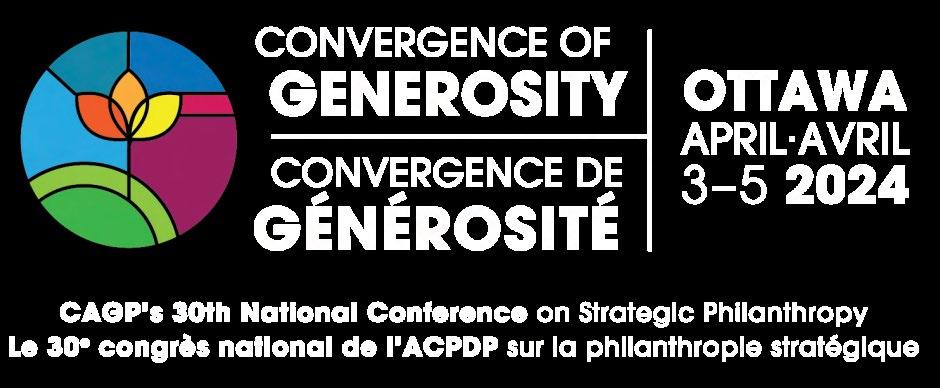
TUESDAY, APRIL 2
PRECONFERENCE SESSIONS
07:30 – 18:30 | See Agenda Handout for Details
13:00 - 18:00 | CONFERENCE REGISTRATION OPENS
17:00 - 17:45 | SPONSORED SESSION: CANADA LIFE MY PAR GIFT – A SIMPLE, SINGLE PAY, PARTICIPATING LIFE INSURANCE POLICY DESIGNED FOR CHARITABLE GIVING
17:30 - 18:30 | FIRST TIMERS RECEPTION | Sponsored by Benefaction
WEDNESDAY, APRIL 3
08:00 | LAND ACKNOWLEDGEMENT / OPENING THOUGHTS AND REFLECTIONS
08:00 - 09:00 | PLENARY: GENEROSITY AS AN INTERVENTION TO SCARCITY: RECOGNIZING AND HEALING MONEY TRAUMA FOR MORE MEANINGFUL, EFFECTIVE FUNDRAISING RELATIONSHIPS
09:15 - 10:45 | MORNING SESSIONS A - 90 MINS
Six Sessions to Choose From. See Agenda.
10:45 - 11:15 | BREAK + EXHIBIT HALL NETWORKING LOUNGE | Time to refresh, network and meet exhibitors.
11:15 - 12:15 | MORNING SESSIONS B - 60 MINS
Six Sessions to Choose From. See Agenda.
12:30 - 13:30 | PLENARY/LUNCH - 2024 CAGP TABLE TALKS | Sponsored by KBF Foundation Canada
13:30 - 14:15 | BREAK + EXHIBIT HALL NETWORKING LOUNGE | Time to refresh, network and meet exhibitors.
14:15 - 15:15 | AFTERNOON SESSIONS A - 60 MINS
Six Sessions to Choose From. See Agenda.
15:30 - 16:30 | AFTERNOON SESSIONS B - 60 MINS
Six Sessions to Choose From. See Agenda.
16:30 - 17:30 | WELCOME RECEPTION | Sponsored by Good Works | Join us for an alcohol-free reception, with a mocktail sponsored by the CHEO Foundation
17:30 - 18:30 | PARTNERS & DONORS RECEPTION | Sponsored by Cardinal Capital Management and CAGP Foundation
18:30 | DINE AROUND EVENT | Join us for an optional outing to relax and meet new people.
18:30 | COCKTAIL RECEPTION / FIRESIDE CHAT WITH WCPD FOUNDATION | Join us for an optional evening reception sponsored by WCPD Foundation
THURSDAY, APRIL 6
07:00 - 07:45 | EARLY BIRD SPONSORED SESSION: WHERE TAX & FINANCE MEET PHILANTHROPY | Sponsored by PearTree
08:00 - 09:00 | PLENARY: FROM CHARITY TO CHANGE IN CANADIAN FOUNDATIONS | Sponsored by Aqueduct Foundation
09:15 - 10:45 | MORNING SESSIONS A - 90 MINS
Six Sessions to Choose From. See Agenda.
10:45 - 11:15 | BREAK + EXHIBIT HALL NETWORKING LOUNGE | Sponsored by Carters Professional Corporation | Time to refresh, network and meet exhibitors.
11:15 - 12:15 | MORNING SESSIONS B - 60 MINS
Six Sessions to Choose From. See Agenda.
12:30 - 13:30 | LUNCH PLENARY: TRUST, AND TRANSFORMATION: CANADIAN WOMEN AND PHILANTHROPY | Sponsored by Abundance Canada
13:30 - 14:30 | DESSERT BREAK + EXHIBIT HALL NETWORKING LOUNGE | Sponsored by Carters Professional Corporation | Time to refresh, network and meet exhibitors.
14:30 - 16:00 | FRANK TALKS 2024: AS A SECTOR, WHO ARE WE SERVING? | Plenary Sponsored by Miller Thomson LLP | Recording & Public Release Sponsored by Private Giving Foundation at TD
18:00 - 19:00 | BANQUET RECEPTION | Time to celebrate! | Sponsored by BC Children’s Hospital Foundation
19:00 - 22:00 | BANQUET DINNER & 2024 FRIEND OF CAGP AWARD PRESENTATION | Banquet Sponsor: CIBC Private Wealth | Friend of CAGP Award Presenting Sponsor: CI Assante Private Client
FRIDAY, APRIL 7
07:00 - 07:45 | EARLY BIRD SPONSORED SESSION: CANADA’S CHANGING DEMOGRAPHICS AND ECONOMY AND THE INTERSECTION WITH LEGACY GIVING | Sponsored by Environics
08:00 - 09:00 | PLENARY: DATA FROM THE SILENT PHILANTHROPIST – WHAT DONORS WITH GIFTS IN THEIR WILLS ARE REALLY SAYING | Sponsored by KPMG Family Office
09:15 - 10:45 | MORNING SESSIONS A - 90 MINS
Six Sessions to Choose From. See Agenda.
10:45 - 11:15 | BREAK | Time to refresh and network
11:15 - 12:15 | MORNING SESSIONS B - 60 MINS
Six Sessions to Choose From. See Agenda.
12:30 - 14:00 | CLOSING PLENARY: “THE LEGACY OF YOUR DASH” | Sponsored by Raymond James Canada Foundation
14:00 | CLOSING THOUGHTS AND REFLECTIONS | Speaker: MONIQUE MANATCH, ANISHNABE ALGONQUIN KNOWLEDGE KEEPER
14:30 - 17:00 | OPTIONAL SOCIAL ACTIVITY | Make the most of your time in Ottawa by adding on one or more of the social activity options available.
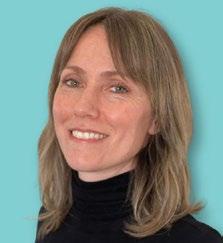 BY LAURIE FOX
BY LAURIE FOX
We’ve all heard it, the bleak predictions for the future of charitable giving in Canada. The narrative that fewer Canadians are giving, younger donors aren’t giving as much as previous generations…you know the stats. But this narrative is missing one big thing…
The number of charitable gifts in Wills in Canada is growing, and in a big way!
Will Power, a national awareness campaign inspiring Canadians to create positive change through their Wills, commissioned a study at the end of 2022. The goal was to find out how many people have made a donation in their Will, and who they were.
The results were astounding. Between 2019 and 2022 there had been a significant increase in the number of Canadians donating to charity in their Will, from five to eight percent! That’s 1.2 million more people giving in their Will, and an expected $37 billion in future donations. A further 22 percent were planning or considering a donation in their Will sometime soon.
That’s right, donations are on the rise. Just not in the way you thought.
You’d be even more surprised by the type of donors giving this way. The study revealed that younger Canadians are more likely to leave a charitable gift in their Will than older donors. In fact, 11 percent of Millennials have already made a donation in their Will, versus six percent of Boomers.
Younger donors are also more likely to use other financial tools at their disposal to give back. For example, another 11 percent of Millennials have named a charity as beneficiary of their registered
retirement savings plan (RRSP) or tax-free savings account (TFSA). Whereas only three percent of Boomers have done this.
Regardless of who is giving, the point is clear — there is a movement building across the country. Canadians are finding different ways to give, be it through their Wills, registered funds, or some other financial asset.
We’re not talking about wealthy philanthropists here; this movement is made up of ordinary Canadians. It’s no surprise really, when you consider the current economic climate. Inflation, housing prices and debt levels may have had a negative effect on people’s ability to give, but not on their desire to. Most of us have a fundamental need to make a difference in this world. If we could find a way to express that, while still maintaining our quality of life, why wouldn’t we?
At Will Power, we like to illustrate the point by showing people how one percent in their Will can result in a shockingly big donation. They don’t use any of the money they need now, and they still leave the majority in their Will to family. (Talking about the tax savings involved certainly helps seal the deal.)
When we tell people this, the lightbulbs go off, and the excitement is palpable as they start imagining their potential impact.
But how does this help charities, who are struggling to meet demand now? This is revenue that’s going to come way in the future, especially if we’re talking about Millennials.
Well, consider this:
❯ Research from Dr. Russell James shows that donors who write a charity into their Will typically end up increasing their annual donations too…by as much as 77 percent!
❯ When those legacy gifts do come in, they can be huge, and more often than not, unrestricted. For many charities, they are game changing
❯ Legacy fundraising is the most cost effective type of fundraising around. It costs just cents on the dollar
There’s nothing to lose really. So what’s stopping more charities from getting in the game?
Charities are front lines in this new era of growing need. It can be hard to even think about the long-term when there’s so much at stake. But making just a little space for legacy fundraising is worth it. Will Power predicts that in the next six years, another five percent of Canadians will leave a charitable gift in their Will. That’s an estimated $58B for important causes in this country.
Legacy fundraising has also never been easier! There are so many tools popping up that make it cost effective and time efficient. At Will Power we make legacy marketing and know-how accessible to all charities and advisors. There are financial and legal innovations out there that make the execution more available too.
It’s all welcome news. After decades of worrying about the decline of charitable giving, we can now confidently point to one area that is on the rise. Better days are ahead. It’s a message we all need to hear.
Foundation Magazine spoke with the founder of a new technology solution for wealth management services, a system which connects financial planning and philanthropy.
Nicholas Palahnuk, CFP®, CIM®, an Investment Advisor and Senior Portfolio Manager, leads The Palahnuk Group. The Palahnuk Group’s vision is to transform the lives of clients through extraordinary wealth management. Toronto-based PhilanthPro Solutions launched new financial planning software designed to help donors plan their giving. PhilanthPro helps financial advisors create and manage goals-based financial plans for charitable accounts. “It’s crazy that we don’t have tools to help people give their money away,” said Palahnuk, who is also CEO of PhilanthPro. “Our whole industry is set up to help people to accumulate wealth.”
Palahnuk has been an advisor for more than a decade, working with clients to build and protect their wealth, but became aware of a lack of sophisticated software for giving money away when he founded his own charitable foundation. He had created The Palahnuk Foundation, which improves mental health for young people by funding innovative programs that create greater mental health resiliency.
Steve Lloyd: Tell me a little about PhilanthPro.
Nicholas Palahnuk: PhilanthPro is a new cloud-based platform built to bring the power of planning to philanthropy. The features include philanthropic financial planning, real-time grant planning, and a suite of organization and management tools.
SL: Who exactly is the software for?
NP: PhilanthPro was built specifically for clients with foundations, charitable trusts, and donor-advised funds.
SL: And what does it cost?
NP: We purposely kept our costs low at $3-$5k per year in order to be relevant to more of the philanthropic community. Appealing to a broader market, we can help more people leverage the software for greater impact, and that’s what excites us.
SL: Tell me a little about yourself, and why you founded PhilanthPro?
NP: I’ve always had a passion for philanthropy. As a teenager, I spent months volunteering in East Africa. I went on to become a wealth manager and spent my career helping people accumulate wealth. With time, I found myself more and more interested in giving back and I set out on my own philanthropic journey. PhilanthPro was an opportunity to bring together my skills as a financial planner and my passion for philanthropy to produce something more meaningful for the world.
SL: How did this all get started?
NP: In its infancy it was just an idea to create better tools for philanthropy that would address problems people faced when they wanted to give their wealth away to help others. From there, we assembled an advisory group of philanthropists and advisors to tell us what their problems were. We listened, asked more questions, and continued to listen. The whole process took over a year to really fine tune what was needed. During this research, we got to work and built prototypes for their feedback. It was quite a dynamic process.
SL: Being a wealth manager, how did you create software?
NP: After we proved our concept, we invested in a relationship with a leading Canadian software development company. Being guided by our vision and market research, we brought to life
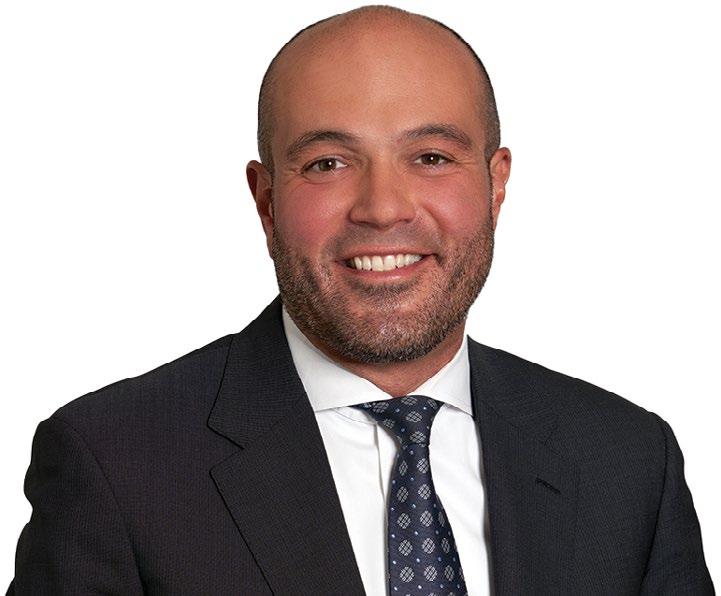
SL: What was the most challenging aspect of this all?
NP: The most difficult aspect was synthesizing all the feedback we were getting and coming up with a solution that would best address everyone’s issues. We were talking to such a diverse group of people. While everyone had a different perspective, we had to find common ground and build something that would truly solve the key underlying problems. That wasn’t easy.
SL: And what was the most enjoyable aspect?
NP: The reaction of clients. Hands down. Seeing clients “aha” moments when we demo the software is just so remarkable. We recently hired a head of business development, so I don’t get to demo the software very much anymore, but it was just astounding to watch everything click in clients’ minds as we walked through the platform with them. Nothing can compare to knowing you’ve created something truly valuable for people doing extraordinary things with their wealth!
SL: How does someone get started with PhilanthPro?
NP: Probably the best thing would be to see it for yourself to judge whether it’s right for you. Next, I would suggest getting your financial advisor involved since this tool is best used alongside an advisor. Our client care team is always there to help along the way. We really want to foster philanthropy for a brighter future, and our software can help people do just that!

 BY DAWN FELL
BY DAWN FELL
This question has been on my mind as it once again is time to update my will. My youngest is about to turn 20, so there are no longer any “children” in my estate plans. Like many people, I wrote my first will to ensure there would be someone of my choosing designated to look after the kids if anything happened to me and my husband. Now, more than 20 years later, it’s time for an update.
The kids will still inherit most of my estate, but I’ve been thinking about other ways I can make an impact, and which causes I would like to support with a legacy gift. For me, UHN made a significant impact on my life in my early 30s, and it’s important for me to support the team who cared for me so that in the future, others can receive the same outstanding care that I did.
That draw to support UHN brought me to UHN Foundation where I lead the Estate Giving portfolio, helping others leave a legacy that will support health care and medical innovation.
UHN has a rich history of discovery that has saved — and continues to save — countless lives, in our local community and beyond. The teams of world-class clinicians and researchers are driven every day to unlock new ways to make lives better. By leaving a legacy gift to UHN, ordinary people can help
UHN achieve extraordinary things — allowing UHN to accelerate discoveries and provide patients with the world-class care they need and deserve.
We all need healthcare
At some point everyone will need the health care system, and we want to be able to offer the best care and most advanced treatments when our communities are in need. Donor support, including legacy gifts, are part of the reason UHN is the #1 hospital in Canada. Philanthropy is absolutely critical to the work happening every day at UHN — it attracts the bestand-brightest medical minds and allows us to remain at the forefront of health care innovation on the world stage. Donations have helped UHN to do so many incredible things, like working towards a blood test that can diagnose arthritis early, using AI to increase the likelihood of a successful organ transplant, and developing a remote monitoring program to help cardiac patients in remote communities better manage their care. Supporting UHN — the world’s #1 publicly funded hospital — means accelerating the advancement of patient care and saving lives here and around the world.
None of us knows what the future holds, but by supporting and encouraging philanthropy through our work, our legacy, and that of our donors, will be a lasting positive impact on the future. At
UHN, we have launched a new campaign, UHNITED, which reminds us of the power we have when we come together to support a common goal. No one ever changed the world on their own, but when we come together with donors believing anything is possible, it is.
Many of you work with donors and clients who support charities, and encouraging them to consider a legacy gift is an important way to help them achieve their philanthropic goals and change the future for the better.
Over half of Canadians haven’t made a will at all, and many admit that their will does not reflect their current wishes for their estate. For me, this likely isn’t the final update to my will, but I will sleep better knowing that it is up-to-date with where I am in my life right now, and it will benefit not only my children, but people from across my community who may need life-saving care at UHN in the future. I am hopeful that one day, my legacy gift will fuel the next major breakthrough in medical research that will make a difference in countless lives, the way UHN made a difference in my life many years ago.
I encourage you to think about your own legacy wishes, and to help and support your donors and clients in the achievement of their legacy aspirations. DAWN
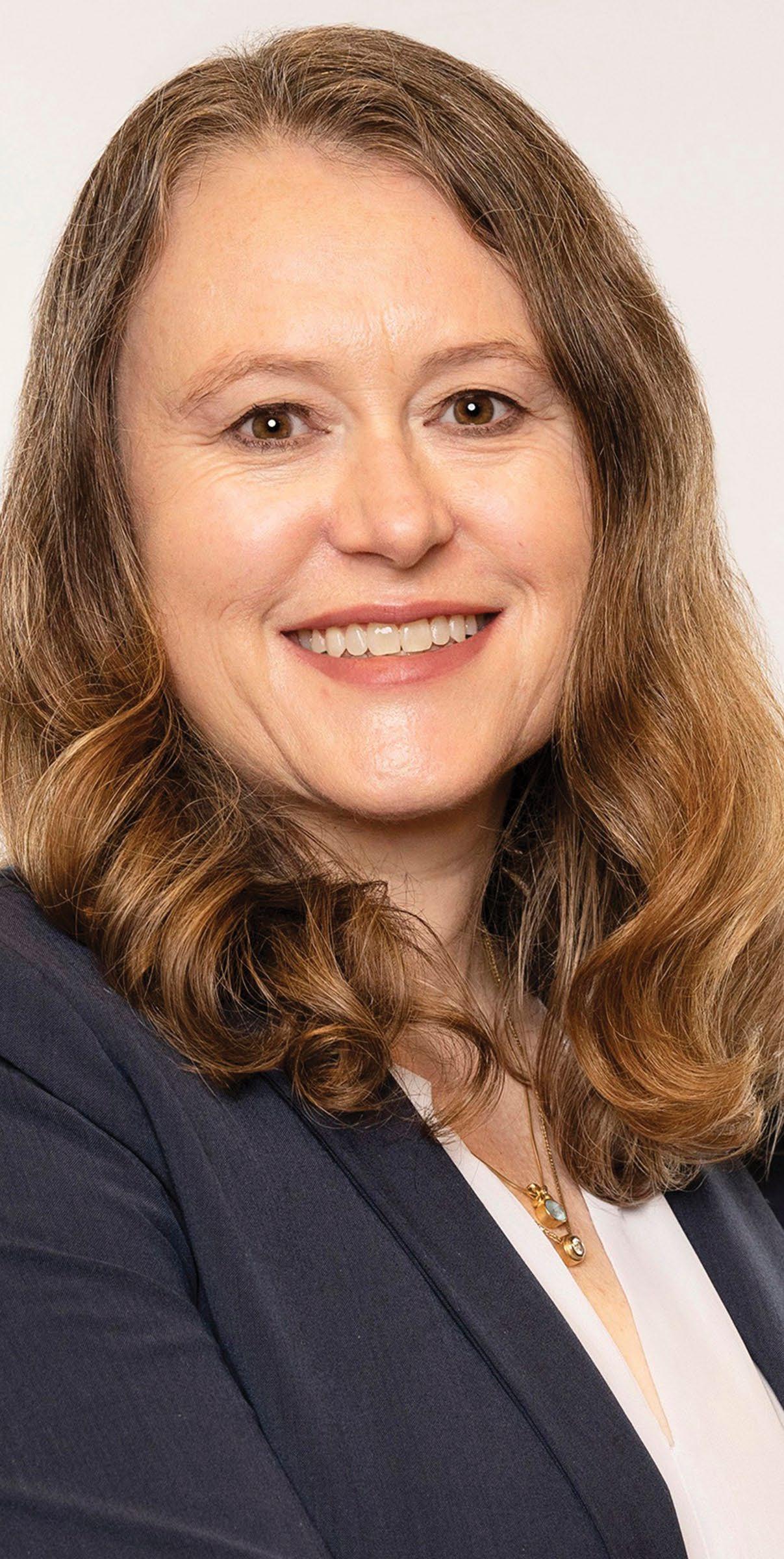
“Dowhatever you think is right with it.” That was the instruction David “Sandy” Gottesman left for his wife, Dr. Ruth Gottesman, along with a stock portfolio worth billions.
You may have read about this story in the news. Initially overwhelmed by her late husband’s bequest, Dr. Gottesman did nothing at all for two years, but at the urging of her children she finally made a decision. In 2024, she gifted $1 billion to the Albert Einstein College of Medicine in the Bronx, an institution she’s been involved with since 1968, first as faculty, then on the board of trustees, and currently as chair. The Gottesman’s gift will cover tuition for all students in perpetuity.
There is a lot that’s “right” about this story of giving. Indeed, it’s an example of philanthropy doing exactly what it should: contributing to an institution important to the benefactors and the greater community. The United States
needs doctors, and free medical school tuition offers significant opportunity while reducing the debt burden on students in the Bronx. It’s a beautiful legacy. Still, it left me thinking about the value of having a strategic giving plan.
A case for planned giving Planned giving is exactly what it sounds like: making a plan now for a monetary gift in the future — often, but not always, after death.
Philanthropic giving, in all its forms, aligns with Canadian values, but it seems safe to say that only a small percentage of Canadians have a strategic giving plan. Perhaps that is starting to shift; a study commissioned by the Will Power campaign found the number of Canadians naming a charity in their Will increased from five to eight percent between 2019 and 2022, a jump of 1. 2 million people.
There is no question that planned giving has benefits for the recipient charities, including of course stability of revenue, and the ability to plan programming around that revenue. But there are also many advantages to donors, and their families.
Simplifying the donor’s estate – and leave no doubt Few will inherit the billions Dr. Gottesman did, but trying to identify the final wishes of a loved one can be distressing no matter the size of a bequest. Dr. Gottesman spent two years on this very question. If she had also passed, the decision would have fallen to their children.
When instructions for philanthropic giving are included in a wealth distribution plan, it relieves the inheritors of a significant burden. They don’t have to question what the deceased would have wanted or worry that they got it wrong. They’re free to simply remember their loved one.
It’s worth noting that this is an issue on the rise. Over the coming years there will be one of the largest wealth transfers in history, involving trillions of dollars in assets across Canada, the United States, and the United Kingdom. In Canada, women outlive men by
an average of four years, so it’s likely they’ll bear more than their share of the burden. Managing family wealth is an enormous responsibility made even more challenging without clear directions.
A careful, documented plan can also prevent unnecessary discord. According to recent research, only around 30 percent of wealth transfers are successful, in that once the heirs receive their inheritances, the family maintains harmony along with control over their assets . For these reasons and more, benefactors should consider preparing their succession plans now.
Planned philanthropic giving is also a pragmatic decision. With strategic preparation, people can identify the best outcomes for their families and the causes they support.
Sometimes, concerns about charitable giving arise from misconceptions. Some worry that their contributions are too modest or that they can’t afford to donate and take care of their family. Understandably, people don’t want to spend their children’s inheritance.
Including philanthropic planning strategically as part of a donor’s overall financial and estate plan creates opportunities for tax efficiencies, sometimes specifically timed to be most advantageous, that may otherwise be missed.
Of all the reasons for philanthropic giving, creating a legacy may be the most personal. Leaving a gift to an organization or cause makes a statement about the benefactor’s values and it’s a way to provide concrete, actionable support to ensure the work carries on.
You might not be able to take it with you, as they say, but proactive planning will help ensure a donor’s charitable intentions will be carried through. Indeed, it’s the only way to do so.
When Dr. Gottesman took the podium at the Albert Einstein College of Medicine in late February to reveal the bequest,
the announcement caused an eruption of excitement and joy. “You can’t ask for a better gift than this,” one teary-eyed student said. “What this gift means to medical students and the future population that this is going to serve is outstanding.” It’s easy to imagine the pride Sandy Gottesman might have felt to witness the bequest.
Sandy Gottesman’s instructions to his wife were to do with the money what she felt was right, so that’s what she did. Her gift is so important, so appropriate, so profound, that’s it’s almost impossible to imagine anything better. Still, she wonders about it. “I hope he’s smiling and not frowning,” she told the New York Times, adding, “I think he would be happy — I hope so.”
And that, as we know, is the power of planned giving. It clarifies, empowers, and removes those nagging doubts that pester us all — even those fortunate enough to enjoy the kind of trust that Sandy and Ruth so obviously shared.
LEANNE KAUFMAN is the President and CEO of the Royal Trust Corporation of Canada and The Royal Trust Company. She is responsible for the strategy and overall management of RBC Royal Trust, which provides wealth protection and transfer solutions across generations to high net wealth Canadian families. A lawyer by profession, Leanne is the author of the fourth edition of The Executor’s Handbook, a contributor to various publications on the topic of estates and trusts and the host of RBC Wealth Management’s Matters Beyond Wealth podcast. For more information, visit: https://rbc.com/royaltrust
RBC Royal Trust refers to Royal Trust Corporation of Canada and The Royal Trust Company. This document has been prepared for use by Royal Bank of Canada, Royal Mutual Funds Inc., RBC Phillips, Hager & North Investment Counsel Inc., RBC Global Asset Management Inc., RBC Dominion Securities Inc.*, Royal Trust Corporation of Canada and The Royal Trust Company. Royal Mutual Funds Inc., RBC Phillips, Hager & North Investment Counsel Inc., RBC Global Asset Management Inc., RBC Dominion Securities Inc., Royal Trust Corporation of Canada, The Royal Trust Company (collectively, the “Companies”) and Royal Bank of Canada are separate corporate entities that are affiliated. RBC Phillips, Hager & North Investment Counsel Inc., RBC Global Asset Management Inc., RBC Dominion Securities Inc., Royal Trust Corporation of Canada and The Royal Trust Company are member companies of RBC Wealth Management, a business segment of Royal Bank of Canada. * Member–Canadian Investor Protection Fund. The Companies and the Royal Bank of Canada do not endorse or recommend any information, content or services offered in any third party publication or on any third party website. This publication is not intended to provide specific financial, investment, tax, legal, accounting or other advice for you, and should not be relied upon in that regard. Readers should consult their own professional advisor when planning to implement a strategy to ensure that individual circumstances have been considered properly and it is based on the latest available information. ® / ™ Trademark(s) of Royal Bank of Canada. RBC and Royal Trust are registered trademarks of Royal Bank of Canada. Used under licence. © Royal Trust Corporation of Canada and The Royal Trust Company 2024. All rights reserved. Printed in Canada.
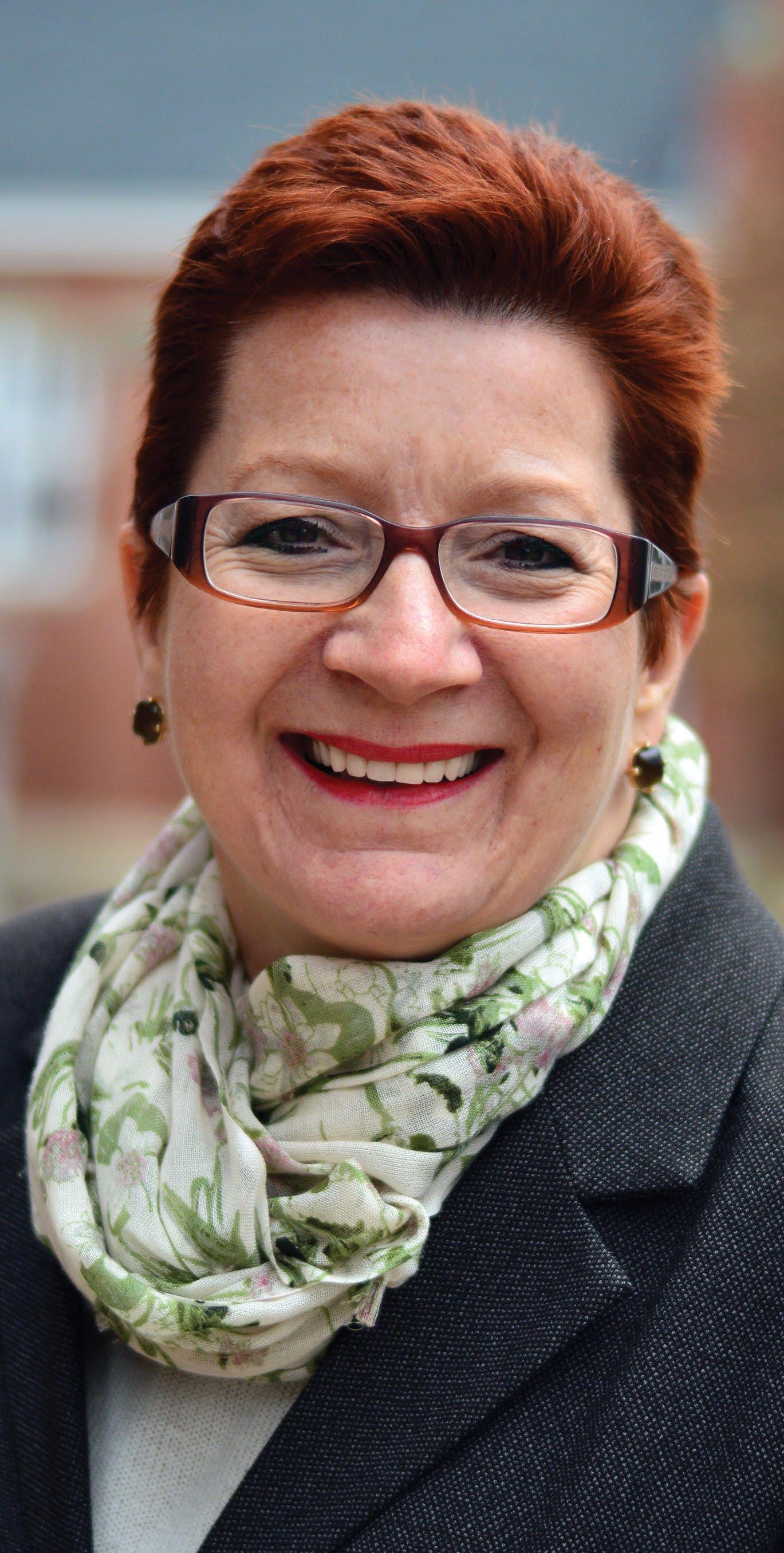 Kathleen A. Provost
Kathleen A. Provost
As a professional fundraiser I often wonder how to better engage with different segments of the population. There are many generational divides in society and being an “older” Generation X’er, I often seek new ways to relate to other Gen X’ers, and Gen Y’ers, and Gen Z’ers, as well as Baby Boomers. Over the years I have noticed that each of these generations have things in common; however, I have also become aware of how their philanthropic interests are so very different. No matter the age, the demographic, or the wealth of a donor, it is the intent of a donor that must be our focus as brokers in a philanthropic transaction. As a fundraiser, I need to not only understand the intent a donor has by making a donation, but more importantly I need to better understand the motivation behind the intent. Does the donor perceive a societal problem? Why is it a problem according to them, and what do they want to do about it? There are, and have been, trends in each generation we interact with. However, when considering the “why” of a philanthropic gesture it is imperative to really understand “how” does this gesture relate to the donor “today” — in their current life.
In a recent Philanthropist Journal article entitled: “Generations may collide in the non-profit sector, but many challenges remain eternal ”, Tim Harper, a Toronto journalist and author, presented an interesting comparative of two extremes on a generational
spectrum and their approach to answer today’s challenges. Harper states that:
“After engaging two cohorts, … indelicately branded ’elders’ and ’reformers’, to look back and to look ahead, … one obvious truth arises: today’s elders in the sector were yesterday’s reformers. And today’s reformers, should they stay in a sector, are tomorrow’s elders.”
How one practices their philanthropy is guided by a number of factors. Wealth is at the center of philanthropy and we have been talking about an intergenerational transfer of wealth for a number of years now. However, having disposal income to make philanthropic decisions does not necessarily equate to this wealth being invested in the charitable sector in the same manner it was with previous generations. The philanthropic transaction is much more than the dollar value of the transaction. Some individuals want to revolutionize society, at times called “reformers” to address longstanding issues. Others, sometimes under a different label, need to measure and understand data to inform how they will make their donation.
So as fundraisers, how do we engage with various cohorts of donors and best align their interest or their affinity with our charitable work?
The complexity of problems
Forbes article: “ The Great Wealth Transfer from Baby Boomers to Millennials ”, published by Jack Kelly – claims great wealth transfer in the US is expected to make Millennials the richest generation in American history. Millennials will benefit from their Baby Boomer parents, a generation who currently holds half of the nation’s household wealth and is expected to leave more than $68 trillion to their offspring when they die.
Though these facts are true — this transfer of wealth may not necessarily be available to the charitable sector. “Next generation donors” may not have the same reality or perspective then previous generations. As professionals in this sector, we need not only to understand the interest of the individuals holding these “discretionary funds”, but we need
to engage them and meet them where they are at today.
The magnitude of solutions
Identifying, prioritizing, or agreeing on how to solve a societal issue, or address a perceived injustice, is too complex of a situation to command one solution. The lens by which we regard a problem to be solved and the method we agree to solve this problem will be tainted by numerous factors.
I am a firm believer that when we sit around a table to engage and exchange, we bring our own personal baggage. Each individual comes to the table with a set of morals, ideals, experiences, beliefs, and expectations. Which is why there is enormous complexity when we attempt to solve a problem. In my opinion it is not the “problem that we need to solve” that is complex — it is how we think our actions can solve the problem based on the baggage we bring.
Consideration can also be given to a more empirical approach to a donor’s journey to problem-solving. To better understand how a donor makes a decision on their philanthropic gesture, I gave some consideration to Harvard Business Review’s “How to Solve Problems” by Laura Amico which proposes a 5-stage approach to solving problems.
inequalities. Their financial situation may inform if they want to make a long-term commitment towards a charity or invest in small increments to better assess the impact they are having. Whatever motivates the donor in their reflection to reach a solution to a problem they want to have an impact on — we must become aware and understand the steps they are taking in adapting a specific action to reach their end goal.
We must remember that each donor’s intent with their donation will be shaped by many external factors — most of those factors often being outside of your charity’s needs or agenda. How do we reconcile this problem-solving journey then? More so, how do we ensure that the philanthropic gesture of an individual, or a group of individuals, has the intended impact?
My final thoughts
Whether a donor is young or old, intending to have a huge impact or simply contributing to your charitable goal, each relationship is now more tailored and segmented based on several external factors that are out of our control. Donors expect individuality. So, gone are the days of mass mailing or bulk approaches. Regardless of my personal opinion regarding a donor’s introspection, each donor will filter
We subconsciously move back and forth between these stages before landing on a solution and making a plan.
Source:AI PittampalliWhen we consider this approach or a variation of this approach, the fundraiser in me can sees how many additional factors to contemplate when engaging with a specific donor. At each step in the decision-making process, an individual will use the lens they have in an attempt to solve a specific issue. Their own age may offer a colonial perspective on
information and data with a personal lens with the intent to contribute to a solution to address a perceived societal problem. Today, we must understand how the “donor perceives this issue” because it influences their philanthropic gesture. Charity is not about contributing
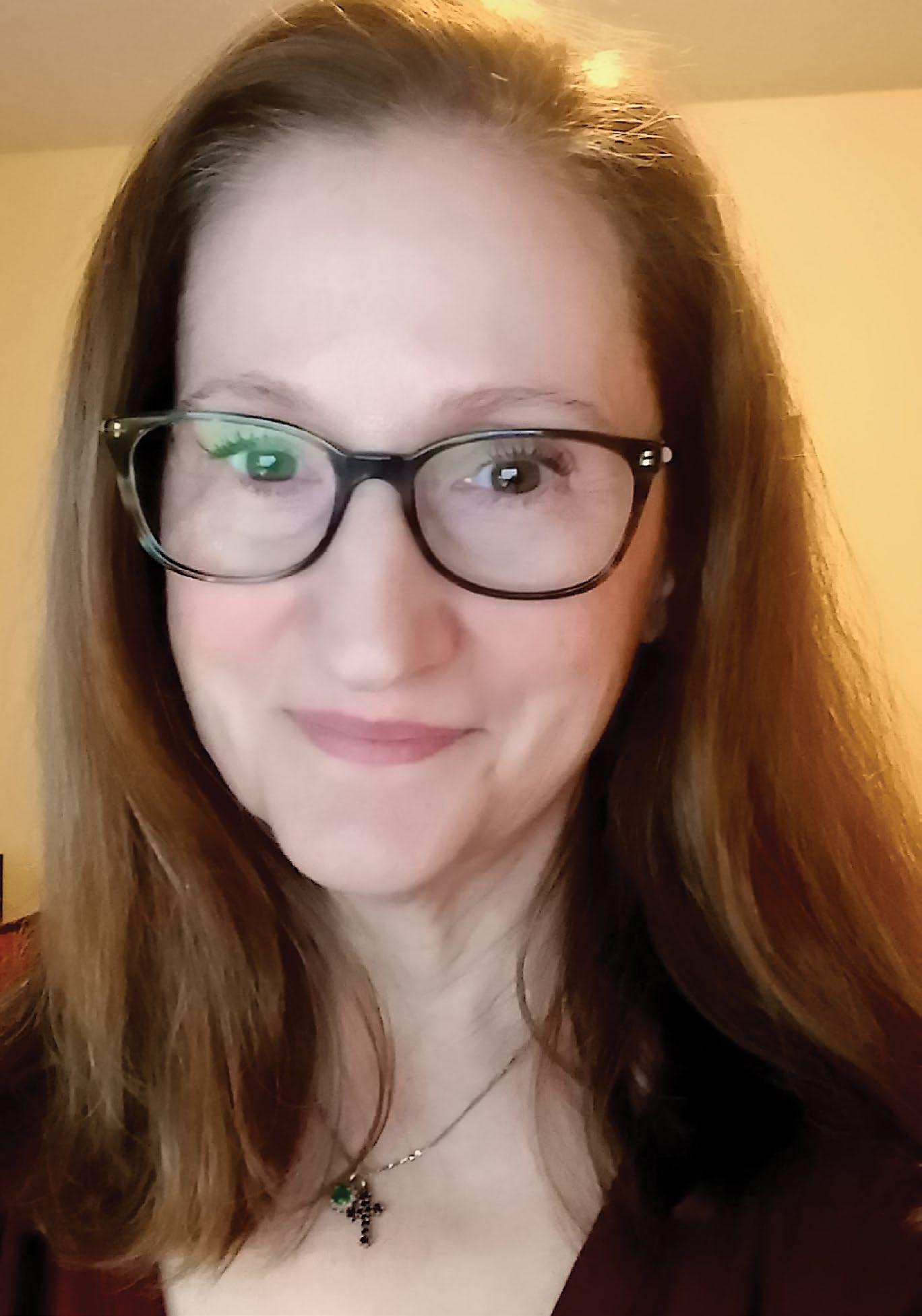
Iwas in high school. It was the highly-anticipated movie event of a lifetime.
None of the theaters nearby were showing it — yet. But my friends and I were determined. We located a theater 40 minutes away.
But there was a problem: how would we get there?
My parents couldn’t give me the car that night. And it was the same with two other friends. Then Tom secured his parent’s station wagon. All of us piled in and began our journey — much more than 40 minutes away.
We found the theater (no Google maps!). We bought our tickets and found our seats. The screen went black.
Then words, in blue type, began scrolling:
A long time ago in a galaxy far, far away…
We knew the trouble had been worth it.
A long time ago in a galaxy far, far away....
The power of story in our lives.
No one ever has to teach us how to get lost in a story, for the same reason no one had to teach us how to melt into a hug. It’s biological.
Stories are the best teachers. They’re a brain-driven reward system.
From our earliest ancestors, gathered around a fire at night, stories are human. They teach us from another’s experience. They expand our world.
Stories create oxytocin. Character-driven stories consistently cause oxytocin synthesis. Oxytocin is the brain’s “safe to approach others” signal. It’s what floods a new mother’s system when she nurses her baby.
The brains of a person telling a story and those listening to it can synchronize. Stories build trust and enhance empathy. And of course, that’s why you’ll want to use them in your fundraising.
Here’s a simplistic explanation but I think it will help. Think of your brain as part emotional, part analytical. You might assume that the best way to persuade someone to do something is to offer reasonable facts.
This is what happens when your fundraising communications show off your beautiful statistics.
The problem? Facts and stats light up the analytical part of people’s brains. And that’s the part that says, “Don’t give up your money!”
Appeals that come down to: “We need to reach
our budget goals for the year” are so uninspiring. Budgets don’t have feelings.
We need to reach into the cooperative, emotional part of people’s brains. The part that empathizes with what someone else is feeling. And the human way to do that is through stories.
Think of your favorite book or movie. One where you became engrossed in the story. Have you ever been so involved that your body twitches when the protagonist gets hurt? Or cried when they cried?
I’m currently reading the latest in Pierce Brown’s Red Rising series. I’m reading, and yet sad about finishing the book. The characters become part of me again. I hate when I good book is over.
Stories are how we learn to share each other’s burdens. They move us to help because we’re feeling what someone else is feeling. And our brains are right there with us. We’re rewarded — chemically — when we do something good.
Telling stories makes us vulnerable
Telling good stories — the kind that will open other people’s hearts (and brains!) — asks that we share the same feelings we’re communicating. It does require some bravery from the writer. You must be willing to put yourself in your protagonists’ shoes — especially if they’re full of holes and the ground is frozen.
But isn’t that really what fundraising is about? Fundraising writing is sharing one person’s story — their humanity — with another person. Then inviting that other person to become part of the story.
If you’ve been wondering why I’m making such a fuss about stories, read on.
Here’s the thing. Insiders (that would be you, nonprofit hero) understand all the details. We eat, sleep, and drink our organizations’ missions — the “why” of our work.
But almost none of your donors or might-be donors do.
They have their own lives and their own whys. Next to those, yours are secondary.
But a story can help change that — if only for a moment.
Change someone’s understanding Humans are amazing.
“When we tell stories to others that have helped us shape our thinking and way of life, we can have the same effect on them too. The brains of the person telling a story and listening to it, can synchronize,” says Uri Hasson from Princeton University.
That’s power.
Stories are how we can help our readers see our ideas as their own.
Keep your story simple to be effective
We like to think of modern humanity — of ourselves – as multitasking masters. (Honestly, what else are you doing as you read this? Listening to music? Glancing at your phone? Sorting a spreadsheet?)
But when sharing a story, simpler is better. Complexity is a roadblock on the trip from your words to their brain. Less complexity helps activate the brain regions that make us relate to a situation and activity in a story.
Plus, if you’re writing for donors, practicality says you’ll need to keep it simple if you want someone to read it. That’s why shorter words, shorter paragraphs, and simplified ideas work better. (And yes, making something less complex can be hard!)
Remember to avoid your insider jargon, too. Use it enough and your reader’s brain will learn to just ignore it.
What does it cost?
Here’s an idea to chew on from Lisa Cron.
“Think of real drama as the internal struggle that the plot catapults your protagonist into, forcing her to take action whether she wants to or not. If taking that action doesn’t cost your protagonist dearly on a deep emotional level, then it’s not a problem. Nor is it a story. Even if, on the surface, something big happens.”
If you want someone to not only scan what they’re reading but take it in, you want that drama. And the drama means internal struggle.
Your plot doesn’t have to be right out of James Bond. But what’s happening in your protagonist’s head should be fraught. Meaningful. Hard. (No, not jumping out of airplanes!)
Every choice is not only an acceptance
of one path but a rejection of another. And it’s that rejection — how much it hurts, how hard it is — that pulls a reader into the story.
If there’s nothing difficult, there’s no story.
And if you’re writing for donors, that shouldn’t be hard. If your mission is critical, if your work is in urgent need of funding, then you need to find that point of choosing and make it your reader’s choice, too.
“I could put this letter down now and go on with my life,” your reader thinks. “But now I feel for this person. And I’ll feel bad if I don’t do something.” Give, or not give. That’s the choice for an appeal, right? Why choose “give”? Because it will feel better.
For example, Jane is a young mom with a newborn baby. The baby has health issues and she’s frightened for him. So she hasn’t been going to work, and now the rent is due… and she doesn’t have any money.
She could leave the baby with her neighbor, but the neighbor has 4 kids of her own to watch and Jane isn’t sure her baby will get the attention he needs… …Or she and the baby could find themselves without a home.
Either choice is hard. Scary. Lifethreatening, even.
What should she do? What would you do?
That’s when you can offer an alternative to two bad choices. By giving today, your donor can help — enroll the baby in highquality childcare, maybe. Or find Jane housing support so she can care for him.
Now your donor — who has become personally invested in Jane’s story and life — can avoid making that hard choice in her own head. Making a gift is now a great answer to an awful problem.
What is it I want to say? What story can I tell?
Before you even start, think about that question. It’s why I love Jeff Brooks’ simple prompt: “What I want to tell you is…”
Think about that question. Think about a story that will take the idea and plant it in some brains. And think about how you share the story – illustrate the cost to your CONTINUED ON page 20
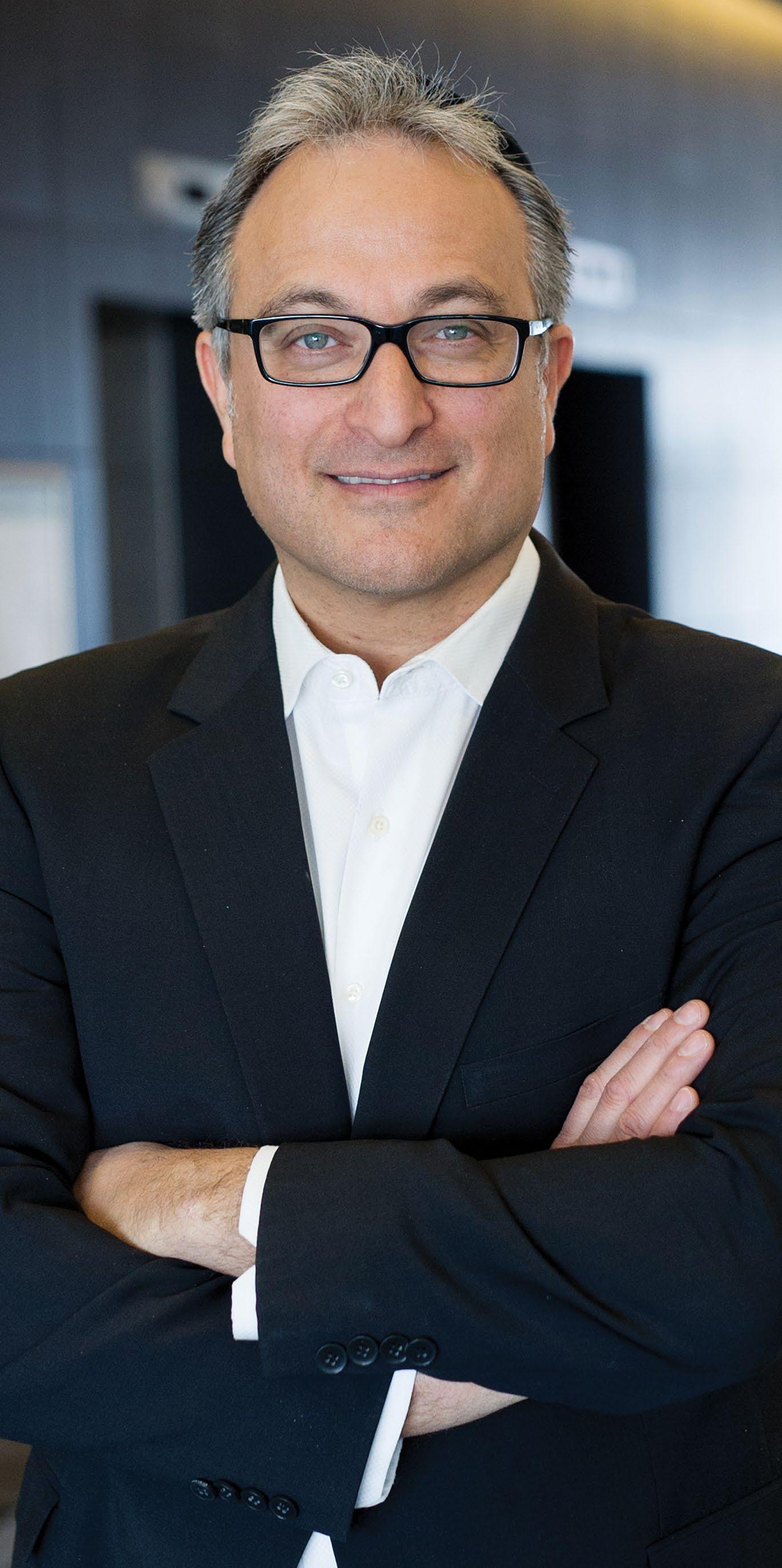

When people think about Life Insurance, they generally focus on the death benefit — the large lump sum that goes to beneficiaries after an insured person passes away. But what they don’t know is that Life insurance can be owned and paid for by a Foundation/DAF, and that participating whole Life Insurance is an extremely flexible financial solution that Foundations/DAFs can use strategically to benefit from during the insured person’s lifetime, as well as providing a large legacy sum on death.
As part of our work with generous families, we’re always looking for ways to maximize the impact of
philanthropic gifts. We also work directly with leadership teams at charitable organizations, advising them on strategies to attract gifts and how to create them in the most cost and tax-effective manner. We’re keenly aware of more than 20 ways to be generous, all better than using cash, cheques and credit cards, with advantages for both donors and recipients. Contact us to obtain a copy of our report.
Sadly, very few professionals, charities and donors are fully aware of what can be done. What we’ve discovered over the years is that Life Insurance has enormous potential to meet the needs on both sides of the philanthropic equation.
One family we advise has a Private Foundation with over $100 million in assets. We showed them that Life Insurance owned by their Foundation can enable them to create even more charity without contributing any additional funds to the Foundation. Think of it as moving existing furniture around, without buying any new furniture, to build more capacity to disburse money to charities now and in the future.
In their case, we used $1 million of funds already in the Foundation/ DAF, every year for 10 years, to acquire a Life Insurance policy owned by the Foundation/DAF. The joint last-to-die policy insured the couple in their late 50s with an initial $16 million death benefit. Just like that, we turned a total $1 million investment from their Foundation into $16 million more of charity, if G-d forbid the insured couple passed away. Of course, we hope that they will live to a life expectancy of age 90, when the death benefit grows to almost $60 million!
The policy we recommended also provides the Foundation/DAF with additional “living” benefits that can access the cash value for charity during the lifetime of the insureds. That means the Foundation/DAF doesn’t have to wait until the insured couple dies before it starts distributing some of those funds to charity. There are several ways to make this happen.
Over time, participating whole Life Insurance accumulates a cash value (CSV) that can be withdrawn and used. After
one year, the policy this Foundation/ DAF acquired has a cash value of more than $450,000. After five years, the cash value is $3.7 million. After 10 years, it’s almost $8 million and at year 14 (even though payments were only made for ten years), it’s $10 million which means the Foundation is completely “cash on cash” with what was deposited. This money can be withdrawn at anytime and disbursed to important causes without any taxation. And there’s no need to pay the withdrawn money back into the policy as it is simply subtracted from the death benefit at death, which enables charities to do more of their important work today.
Additionally, the Life Insurance policies we use for this purpose pay dividends every year. Most individuals with Life Insurance policies apply these dividends back to the policy, increasing the death benefit and cash value. But there’s also the option to take the dividends as cash. Because the policy is owned by the Foundation, the Foundation can take the cash dividends each year and give it away to any registered charities in Canada as an annual gift. By the time the death benefit is eventually paid, this Foundation’s policy would have paid out a total of $11.5 million in dividends, with more than $350,000 available each year starting in year 11 once the policy has been fully paid for.
Solutions like this are fully scalable, up, and down. If a Foundation doesn’t want to allocate $1 million a year for 10 years towards premiums, it can allocate a lesser or larger sum that works alongside its other philanthropic strategies. Note that these policies can have other family members insured, not just the founders, something we are doing now with a fourth-generation foundation by placing policies on the adult children, children and grandchildren. It’s important to note also that insurance is not included in the 5 percent disbursement requirements which makes it even more efficient for gifting. The key is to work closely with clients, charities, and Foundations to determine the best approach for each donor and the charities they support.
We’re happy to share our long
history and expertise in this area with professionals, charities and donors. Helping people understand the “secret sauce” of how to put Life Insurance to work to achieve philanthropic goals is our passion. While it may seem like we’re giving away some kind of competitive edge, we’re deeply committed to tzedakah, a Hebrew word that is often mistranslated as charity. The actual meaning of Tzedakah goes much deeper as it means righteousness or justice. The way we see it, we all have an obligation to give back. We can do that by writing cheques ourselves — but for even greater impact, we can teach others how to implement philanthropic strategies and hopefully merit the reward.
The only thing we ask of you is please consider collaborating together or at a minimum share your success stories. When we hear what you’ve accomplished, we can share that with others to encourage them to join in our efforts. We’re developing a national community of allied professionals (accountants, lawyers, insurance advisors, investment advisors, bankers, estate planners), and charities to create $1 Billion a year in new legacy gifts to charity. We’ve set a goal of $100 million annually for our own professional practice. Please visit https://wealthinsurance.com/ billion.php for details and to join our community. We want to provide you with the wisdom and knowledge you need to be successful together.
The bottom line is that leveraging Life Insurance within Foundations/DAFs is a win-win for donors and charities. It can amplify the charitable intentions of generous families and provide flexibility by providing extra cash to flow out to charities in the short term. And, of course, it can play a vital role in tax and estate planning for affluent families. It is critical to carefully evaluate the various products available to determine the one with the best mix of features to meet your specific short-term and long-term objectives.
MARK HALPERN is a well-known CFP, TEP, MFA-P (Certified Financial Planner, Trust & Estate Practitioner, Master Financial Advisor – Philanthropy). He writes this column exclusively for each issue of Foundation Magazine.
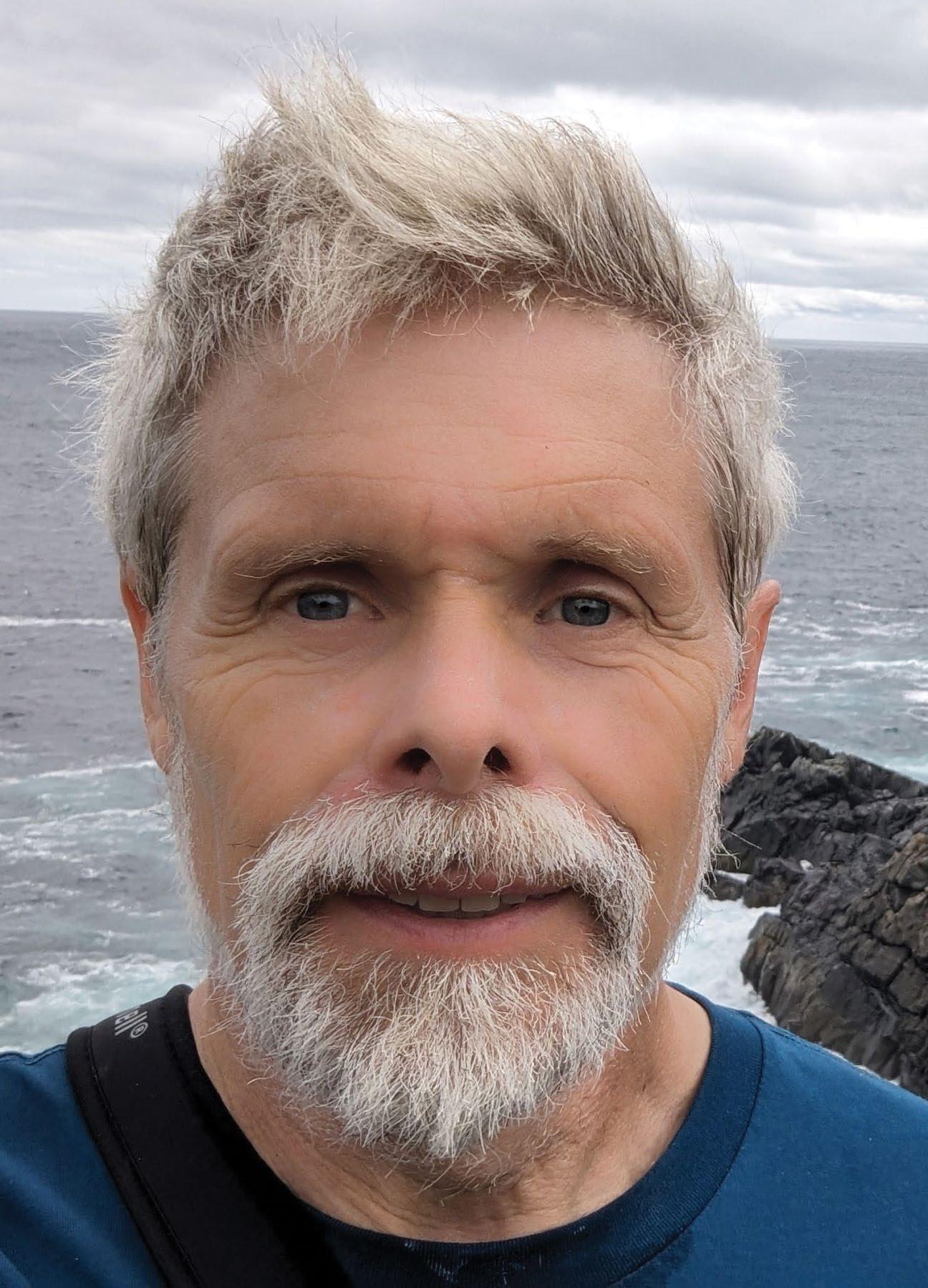 George Irish
George Irish
The winds of change are blowing, and this time they carry the scent of artificial intelligence (AI). Once confined to science fiction, AI is rapidly transforming our world — and the nonprofit sector is not immune. For nonprofit leaders, AI offers exciting opportunities to accelerate your organization’s impact, from streamlining fundraising to personalizing supporter engagement and more. Navigating this new frontier will require openness, transparency, and a proactive approach to understanding the technology and preparing your organization for responsible AI adoption.
Before diving headfirst into the AI pool, it’s crucial to grasp the basics. What could AI mean for your organization? How is it being used by other nonprofits? The key lies in understanding AI’s potential impact on people within your organization and the important work they do to deliver your mission.
Embracing AI isn’t about replacing human expertise; it’s about augmenting it, freeing up valuable resources for mission-critical activities while unlocking new possibilities for impact. For example, AI can analyze vast datasets to identify trends in poverty, personalize educational resources for individual students, or even power chatbots that answer donor questions 24/7.
Remember that AI is a tool, not a magic wand. Transparency and trust are paramount. Be upfront with your teams and stakeholders about how you’ll use AI, address ethical concerns like data privacy and bias, and ensure responsible implementation.
There are valuable lessons learned from the rise of the internet and social media that can help guide our approach to AI adoption.
The rise of the internet in the 1990s, and of social media in the 2010s, offered rosy visions of connecting humanity for the greater good, democratizing access to information, and opening new doors for collaboration and knowledge sharing. Only later we saw the negative outcomes emerge, like the digital divide, misinformation, and online harassment. Social media platforms
connected individuals and communities like never before, fostering activism and awareness-raising. But their profitfocused algorithms have exacerbated echo chambers and fueled polarization.
We can approach AI with a more informed perspective by keeping these unforeseen consequences in mind. Promoting digital literacy and critical thinking skills can better empower your teams to work productively with AI and avoid the pitfalls.
By prioritizing responsible AI, the nonprofit sector can play an important role in shaping its development and ensuring that AI becomes a tool for positive social change, and not another mixed tech legacy.
Navigating this technological frontier ethically and responsibly is crucial to building trust with your stakeholders and maximizing the impact of your mission. Think of it as constructing a robust fortress, safeguarding ethical principles, and maximizing positive outcomes.
❯ The foundation of your responsible AI framework lies in safeguarding data. Be transparent about what data you collect, its purpose, and who has access. Prioritize informed consent and implement robust security measures to protect this sensitive information.
❯ Bias can lurk in the shadows of data and algorithms, leading to unintended consequences. Proactively identify and address potential biases based on factors like race, gender, or socioeconomic background.
❯ Building trust requires accountability and transparency. Establish clear roles and responsibilities for AI deployment and decision-making, ensuring human oversight and control at all times. Regularly assess the impact of your AI systems, report on their outcomes, and be open about any challenges or unintended consequences.
❯ Open communication is paramount. Clearly and proactively inform your
stakeholders about your AI initiatives, addressing concerns and fostering dialogue. Consider involving diverse community members in shaping your AI projects, gathering valuable feedback, and ensuring solutions reflect their needs and values.
❯ Stay informed about evolving ethical frameworks and regulations surrounding AI in the nonprofit sector. Integrate these principles into your AI development, deployment, and governance processes, ensuring your actions align with the highest ethical standards.
Learn more about Responsible Artificial Intelligence for Nonprofit Fundraising (source: Fundraising.ai)
AI is a tool, and like any tool, its impact depends on its wielder. By prioritizing responsible use from the outset, you will better ensure AI serves as a force for good within your organization.
Preparing your organization for AI integration starts with fostering a culture of learning and exploration. Encourage staff to experiment with AI tools, even on a small scale, and create opportunities for knowledge sharing and collaboration. Successful AI adoption isn’t just about technical skills. Equipping your team with essential ‘soft-skills’ is key to harnessing AI ethically and effectively.
❯ Cultivate critical thinking and problemsolving abilities so they can analyze AI outputs, identify limitations, and adapt strategies accordingly.
❯ Effective communication and collaboration are also vital. Your team needs to articulate AI concepts clearly to stakeholders, build trust, and seamlessly integrate with AI-powered tools.
❯ Don’t forget the human element: prioritize empathy and emotional intelligence. Encourage your team to consider the human impact of AI decisions, address ethical concerns, and manage potential anxieties with understanding.
❯ Finally, unleash your team’s creativity and innovation. Foster a culture where they can explore unconventional ways to leverage AI for mission advancement and identify unexpected opportunities that were previously unseen.
It’s natural to feel unsure where to begin or which tools to choose. Overcoming this hesitation is crucial to unlocking the positive impact AI can offer your organization.
Start by focusing on your organization’s specific needs and goals. Conduct internal discussions to pinpoint areas where AI can streamline processes, improve decision-making, or enhance your impact. This focused approach helps you target solutions effectively.
Then carefully assess your current resources and skillset to determine your starting point. This self-awareness avoids setting unrealistic expectations and helps you choose appropriate AI tools.
Instead of aiming for a large-scale implementation, begin with smaller experiments. This allows you to test the waters, learn from experiences, and refine your approach before wider adoption. Explore user-friendly AI platforms that require minimal coding knowledge, making them ideal for getting started.
Finally, seek guidance and collaboration. Seek out resources created by and for the nonprofit sector and connect with other organizations exploring AI. Share knowledge, exchange experiences, and learn from each other’s successes and challenges. Invest in training programs that equip your team with foundational knowledge of AI and consider partnering with AI consultants for specialized support.
Remember, the key is to take actionable steps, even if they seem small. By starting with a focused approach, embracing experimentation, and seeking guidance, you can overcome the initial hesitation and lay a solid foundation for your organization’s responsible AI journey.
From experimentation to impact
Design AI projects to be iterative — repeating the same task or workflow
over again with improvements each cycle from the learnings. Every experiment, successful or not, offers valuable lessons that pave the way for bigger, bolder initiatives. Here’s how to take your initial explorations and turn them into impactful projects:
1. Analyze and Refine: Review your results, identify successes, assess challenges, and understand the impact achieved. This will help you clarify your learnings and identify the best opportunities for greater impact.
2. Scale Up with Confidence: Expand your AI efforts to tackle more ambitious projects. This could involve scaling up a successful pilot to a larger work process, or applying the insights gained to a different area in your organization.
3. Build for Impact: As you progress, ensure your AI projects align with your core mission and deliver tangible, positive outcomes for your beneficiaries. AI is a tool, and its true value lies in the impact it creates for the communities you serve.
4. Collaborate and Share: Don’t go it alone. Connect with other nonprofits exploring AI to share knowledge, pool resources, and learn from each other’s experiences. This collaborative spirit fosters innovation and accelerates the collective impact of AI within the nonprofit sector.
Each organization’s AI journey will be unique. At this early stage of AI adoption, it’s probably wise to avoid ‘packaged’ solutions or platforms that promise organizational-wide benefits. There’s so much uncertainty right now about future developments, it’s hard to believe anyone has all the answers (yet).
The future of nonprofit work:
Shaped by AI, powered by humanity
The integration of AI into nonprofit workplaces is still in its early stages, but its potential for positive change is undeniable. By embracing AI with a human-centric approach, prioritizing responsible use, and cultivating the necessary skills within your team, you

can ensure your organization leverages AI effectively and ethically, leaving a lasting impact on the communities you serve.
The future of AI in nonprofits isn’t about replacing humanity; it’s about amplifying our collective work to create a more humane, just, and equitable world.
GEORGE IRISH is a veteran of strategy, coaching and consulting for AI-powered charity fundraising. He works with Amnesty International Canada and Greenpeace among other organizations.uo He writes this column exclusively for each issue of Foundation Magazine.
CONTINUED FROM page 13
to a cause or a need. Charitable giving, such as the size of a gift, the length of the donation (one-time or multi-year), or even the type of gift, is chosen for the expected outcome or impact a donor wants to have. Understanding this donor is paramount to our work as fundraisers.
I believe we must adapt much more to all segments of our population in order to better engage with these different segments. We must not only understand a donor, but journey with them, and engage with them in shared goals for our organizations as well as the donor’s philanthropic goal.
We are not only working with a new generation; our everyday work is about engaging a new genus of donors.
KATHLEEN A. PROVOST is currently the Vice President, Philanthropy and Communications at United for Literacy (previously
Frontier College), a national organization with 125 years of community partnerships in Canada, offering free tutoring and mentoring to adult, youth, and children who need literacy and numeracy support. Kathleen has over 30 years of experience in the charitable sector. She has been a Certified Fundraising Executive (CFRE) since 2007 and a long-time member and volunteer for the Association of Fundraising Professionals (AFP). Kathleen holds a Masters degree in Adult Education from St. Francis Xavier University as well as a Baccalaureate Arts in Political Science and a certificate in Public Relations from McGill University. As a recognized leader, Kathleen has tailored presentations for French and English audiences at various events including AFP-Nova Scotia, AFP-Ottawa, AFP-National Congress, Coady Institute and the Canadian Council for the Advancement of Education. She has received numerous recognitions during her career, including the Queen Elizabeth II Diamond Jubilee Medal for her contributions to the charitable sector and was recognized as 2021 Fundraiser of the Year in Nova Scotia. She writes this column exclusively for each issue of Foundation Magazine.
CONTINUED FROM page 15
protagonist, and how your donor can help. We’re all a mix of good and bad characteristics — and they can change in any given situation or at any time. But when you share a story that pulls a reader into someone’s struggle, you’re offering them the chance to act on their altruism.
That’s why you want to focus on the “why” of it all. The action — the “what” — is just the external face of the “why”. Just like what your organization does is less important than why.
Lisa Cron offers this idea. Take it with you — I sure will!
The takeaway is this: we don’t come to story to find out what someone did — Bob snapping at a barista; your protagonist making fat jokes — we come to find out why they’re doing it.
Go tell some powerful why stories so your readers can choose to be their own heroes.
MARY CAHALANE is principal at Hands-On Fundraising where she focuses on improving fundraising results through great communication and a donor-centered mindset. She writes this column exclusively for each issue of Foundation Magazine.


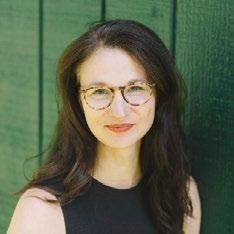
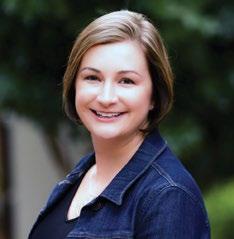 MBY SARA KRYNITZKI AND DR. MICHELE FUGIEL GARTNER
MBY SARA KRYNITZKI AND DR. MICHELE FUGIEL GARTNER
any in our sector may be surprised to learn that data on foundations in Canada is extremely limited — this includes data produced by government, in academia, and even by our own sector. This is despite the fact that roughly 1 in 8 charities in Canada are foundations, and that foundations today steward over $135B in non-taxed assets.
At the government level, there have been some significant initiatives over the years produced by Statistics Canada, but they need to be more regular, and provide a comprehensive look at foundations specifically. Data from the T3010, the form all charities must complete to report to the CRA on their activities annually, is the best regular source of data about our sector. Still, it’s been designed for regulation rather than data collection per se. What’s more, is that its online reporting mechanism is clunky and designed for businesses rather than charities. As a result, uptake of online reporting has been very low, which leads
to all sorts of data integrity issues. Additionally, data from the T3010 is not readily available to the public. Believe it or not, T3010 researchers still need to request CDs to be mailed to them by the government, and most of the data they receive in the CDs is disaggregated in ways that require hours and hours of analysis work by research experts.
In terms of academic and sector data, some research initiatives have been monumental, including PhiLab (the Canadian Philanthropy Partnership Research Network), and Carleton University’s Master’s of Philanthropy and Nonprofit Leadership (MPNL) program, and Charity Insights Canada Project. Imagine Canada’s research capacity is also outstanding — so notable in fact that we recently heard on a panel that to access data on the sector the Government of Canada usually looks to Imagine Canada! Also, over the past ten years, there have been important research compilations about Canada’s philanthropic landscape, such as Intersections and Innovations (Phillips and Wyatt, 2021),
Philanthropic Foundations in Canada (Elson et al., 2020), and several other practitioner reports and case studies. Our organization is very supportive of these initiatives, and we are in engaged deeply with all of them.
The issue is that these initiatives are inadequate: government data is not enough and not very accessible, and academic and sector research is fragmented, irregular, and sparse. There needs to be initiatives with an eye to providing a more fulsome picture of foundations with comprehensive data published on a regular basis.
Why should you care? Because data and research matter. They are used to tell stories, answer questions, understand change over time, and influence behaviour. When the right data is in the right hands at the right time, decisions are better informed, programs are better designed, and services are more effectively and efficiently delivered. More and more, data is regarded as a critical factor in all decision-making processes — but this wealth of information can only be truly beneficial if we know that it is reliable and correct. Indeed, data can improve trust and promote accountability. This is an absolute necessity for a sector like ours. Transparency is a moral imperative, and public expectations on this front is only intensifing.
For all these reasons, PFC has decided to grow its research capacity in a major, unprecedented way. We believe it is the key to more wholistically understanding who foundations are, how they’re changing (or not), what their strengths and contributions are, and what weaknesses and opportunities we need to watch out for. Better data will help us more effectively advocate for our sector about our sector — because without it, who we are becomes largely understood based on assumptions and anecdotes.
The sector’s data deficit continues to challenge all of our efforts, but PFC is taking action.
Our work starts with the launch this spring of our inaugural Landscape of Canadian Foundations report. Building on modest previous research initiatives
on foundation assets and giving trends which PFC has published regularly since 2014, this new report model will use a mix of currently available but underanalysed or unreported quantitative data, including historical PFC investment survey data, along with qualitative data gathered through extensive interviews conducted with a diverse cross-section of philanthropic foundations from across Canada over the past year. It will provide a deep dive into what the data reveals about how Canadian philanthropic foundations developed, and what purposes, approaches, and roles they use to deliver on their mandates — from investment to grantmaking. The landscape report will provide insights on total grantings, areas of funding, and new trends.
After we launch our first Landscape report this spring, we plan to share our findings with our network in cities across the country. Information will be shared on our website soon, and in our monthly newsletter.
What’s even more exciting is that this is just the start. We have much more work on the horizon in terms of building out our research capacity that is in
development with our stakeholders. We will also be doubling down on our policy activities to work with the government on key policy areas, including the data deficit, and we will continue to work in partnership with sector colleagues. The truth is that neither organizations nor government can fix the problem alone. So we are embarking on a big, new research agenda and an ambitious fresh program to bridge the gap between theory and practice in philanthropy, offering invaluable insights to decision-makers, academics and practitioners alike.
Curious to learn more? Don’t hesitate to reach out. We’d love to connect.
SARA KRYNITZKI is PFC’s Director of Public Affairs and Research, and Dr. Michele Fugiel Gartner is PFC’s new Lead Researcher. A registered charitable organization, Philanthropic Foundations Canada (PFC) is Canada’s national network of grantmakers, working together towards a more just, equitable and sustainable world. With staff, board, and members across Canada, our network is comprised of public and private foundations, as well as charities, corporate giving programs, donor-advised funds, and nonprofits whose primary function and activity is grantmaking. In partnership with its diverse membership, and in collaboration with civil society, business, and government, PFC advances the common good through network capacity building, collaboration initiatives, policy work and research.
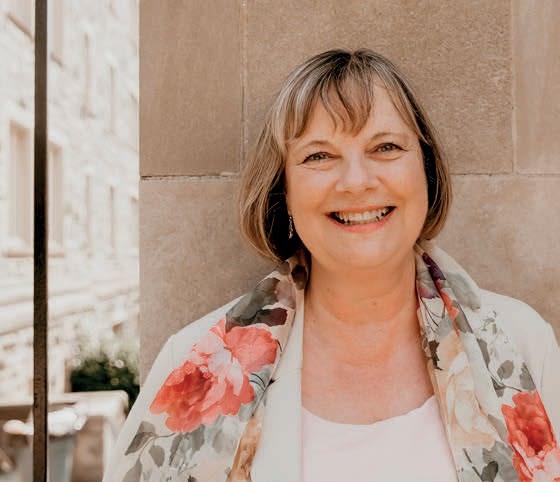


O ering professional prospect research, training, and fundraising strategy. Editor and contributor to “Prospect Research in Canada”, Canada’s first book on prospect research.

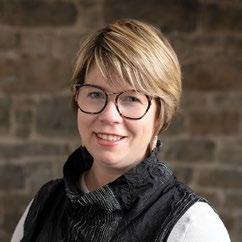
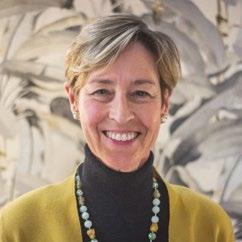 “DBY DR. MEGAN CONWAY AND CHRISTINE TRAUTTMANSDORFF
“DBY DR. MEGAN CONWAY AND CHRISTINE TRAUTTMANSDORFF
on’t it always seem to go, you don’t know what you’ve got ‘til it’s gone.” Joni Mitchell penned those words 50 years ago to caution us about the existential threat posed by unchecked urban development. Today, that same refrain is being sung in communities across our country as scout troops go without leaders, teams go without coaches, board positions sit empty, community events are cancelled, and organizations that provide needed services in our communities struggle to keep up with demand. What’s the common denominator in all of these scenarios? Volunteers. Or, more precisely, the lack of them.
We can say with confidence that no one has ever taken the contributions made by volunteers for granted. Canada has a long and proud history of volunteerism and participation, and organizations at the local, regional, and national levels are keen to recognize and celebrate volunteers and all that they do. So how did we get to a place where the demand for volunteers is outpacing the supply?
While the pandemic had a huge impact on the volunteer sector — an impact that is still being felt today, with many organizations struggling to get lost volunteers to return — some challenges predated and were exacerbated by the pandemic.
Canada’s demographics are changing. As our population ages, it is also becoming more diverse. In fact, the 2021 census tells us that 1.3 million newcomers settled in Canada between 2016 and 2021; this is the highest number of recent immigrants recorded in Canadian census history. Are we adapting our volunteer spaces inclusive and accessible to these new Canadians? And as our demographics change, the meaning of words like “volunteer” and “participation” also need to evolve.
Canadian society has changed too. The pandemic weakened social connections, increasing loneliness and isolation. And it seems that any perceived divisions and differences in our society were exacerbated during the pandemic period, resulting in more mistrust and polarization.
Everyone working in the volunteer sector knows these facts to be true. And they know the impact that these demographic and societal changes are having on their ability to recruit and retain volunteers. But there are still so many questions that have not been answered. How do people perceive their role in society and in the communities that they are a part of? What motivates them to get involved? What barriers stand in their way? And how do they want to contribute? What socioeconomic factors or other barriers stop some of them from volunteering? How does
the situation in rural Canada differ from the situation in our urban centres? What is happening in individual communities around the need for services and existing gaps?
That’s why our most pressing needs are for more robust, timely, and disaggregated data, as well as the capacity to do the necessary related analysis and research. That call for data is one of the pillars of the roadmap that Volunteer Canada created to guide us toward the creation of a National Volunteer Action Strategy.
The roadmap also identifies the need for tools and infrastructure at the national level so that individuals, organizations, grassroots groups, and networks have greater access to what they need to enable and support volunteering and participation. This includes a system for accessible, affordable, and timely volunteer sector checks, as well as a system that enables volunteer matching. It also includes the ability to share resources and materials that will help facilitate recruitment and retention.
Other challenges in the current system exist in the areas of funding, capacity, research, systems, and frameworks. An integrated, consistent, and cohesive approach at the national level — one that is embedded in and supported by the National Volunteer Action Strategy — will help us address these challenges to ultimately protect, support, and facilitate volunteering in communities across our country. The strategy will also help us work together to create new participation and

engagement frameworks and pathways — along with new ways to talk about volunteering that resonate with different groups — so that more people see themselves as volunteers, and every person who wants to volunteer can find a place within the volunteer ecosystem.
The goal of the strategy is to optimize and futureproof volunteering so that everyone in Canada can participate and benefit. Because we know the power of volunteering. We know that volunteering helps to increase feelings of belonging and inclusion. We know that volunteering helps to build strong, inclusive, and connected communities. We know that volunteering helps to uphold our social support system and build community resilience.
Now is the time to solidify volunteering and participation as foundational building blocks of a strong, inclusive, and resilient future. Together we need to shape a shared vision for inclusive participation and volunteering that recognizes, amplifies, promotes, and supports the many different ways Canadians work together in communities all across our country.
Visit www.volunteerstrategy.ca to get more information and to get involved.

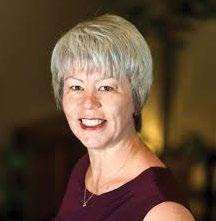 BY LOIS TUFFIN
BY LOIS TUFFIN
Just a year ago, if you wanted to volunteer in Peterborough, you had to become a detective. First, you would investigate various groups to see what they did, then — one by one — if they had roles that fit your skills and schedule.
If you struck out, you would have to start over again. To solve this mystery, you may have questioned your family and friends to see where they offered the time and why. Perhaps it helped. In many cases, it still left you searching.
Meanwhile, more than half of local charities were desperate for volunteers. Yet, due to staff reductions during COVID restrictions, they had less capacity to find and recruit them. In the midst of this dilemma, a new organization was born to bridge the gap.
Today, Peterborough-area residents can go to one website for clear, searchable listings or come to a volunteer fair in the YMCA gymnasium on May 8 from noon to 4 p.m. Both options take the work out of finding a rewarding, convenient way to donate your time and talent.
Volunteer Peterborough.ca works like a dating site. Each side of the match — volunteers and recruiting organizations — define what they have to offer and what they need respectively. Then a filter takes away any roles that don’t fit.
By refining the search, this process takes the guesswork away for volunteers by:
❯ Offering organizations they may not have identified as matches
❯ Narrowing the field to jobs that work for them
❯ Providing the details and contact information to proceed.
This makes it easier for students to find places that will provide much-needed community hours so they can graduate. It also helps new Canadians build up a resume with local references.
For recent retirees, you can choose to use the skills that made you excel in your career or try something completely different! Best of all, you get to pick what you want from a menu of 101 organizations (and growing).
So far, more than 850 individuals have signed up and many of
them have found satisfying roles that support non-profits who need and value them.
Even better, volunteers get to reap the benefits of: A stronger sense of belonging
❯ Better physical and mental health
❯ More robust job prospects
❯ Enhanced quality of life
❯ More opportunities to socialization
❯ Closer knit social fabric
❯ More confidence and friends
❯ New skills,
❯ Better cognition due to problem solving
❯ More laughter and fun
If those don’t inspire you, what will? There’s one more: the knowledge that you help a non-profit organization offer better services at a lower cost. That benefits your friends and neighbours who they need support.
Now, you get to sign up
Registering — as a person or an organization — takes mere minutes. In both cases, you’ll know the answers to the questions we ask, so it’s quite easy.
For individuals, begin under the ‘For Volunteers’ tab where you ‘join’ us.
After you fill in a series of boxes to help us understand how you want to help, you log in and add your personal photo and a banner image to reflect your personality.
Now, it’s time to shop around.
You can discover ways to get involved in three ways: events, opportunities or organizations. The first one shows you what singleday events are coming up that may fit your calendar. This can help families or friends who want to do something together. Further, it’s a great place for high school students to latch onto events that will provide their community hours toward their diplomas.
For those seeking a regular gig, the list of opportunities range from weekly shifts at Peterborough Regional Health Centre to commitments to boards of directors. You’ll often find single events there as well.
To find your match, filter the choices with the dropdown menus for your skills and type of cause benefited. That will weed out the list to narrow your search. For example, the Peterborough Humane Society and YMCA rely on volunteers to care for their on-site plants. You never know how close an apt volunteer role may be to your home or office.
Finally, under Search Organizations, you can use the ‘causes’ filter when going through the list of agencies as well. When you find one that interests you, go to the bottom of the page to see what roles it has open. Simple, right?
Perhaps you belong to a group that needs some additional helpers. We use the term ‘organizations’ since it applies to charities, teams and any non-profit operating in this area. To

start, you need to register so we can prevent any scammers from using our site.
Simply fill in the boxes and add a horizontal logo (1200 by 630 pixels, ideally). You can also add photos to show what your group does. This really is your chance to shine, so tell people about your mission, a brief history and how you engage volunteers in your work.
Approval takes a day or two, then your profile will go live on the site. Once that happens, you can log in to add events and opportunities. For each listing, we ask you to be as specific as possible.
During our focus groups, volunteers tell us that they want to know EXACTLY what to expect when they take on a role. Some of them have been burned by miscommunication or misaligned expectations. Clarity right from the start helps them settle in and stay.
In particular, they want to know about the time commitment: how many hours per shift, shifts per month and if they can take time off when needed. Robust details about skills, outcomes and rewards also help them see themselves working with you.
Don’t be shy about how their enthusiasm and skill will change the lives of your clients, staff and the public. Volunteers thrive when they feel a sense of purpose; please feed that drive and they will stick with you.
If you’re not tech-savvy, you can reach Program Manager Genevieve Ramage at the Peterborough and the Kawarthas Chamber of Commerce. Call her at 705-874-0073 or email her at volunteer@volunteerpeterborough.ca.
In all, Volunteer Peterborough exists to help every willing volunteer and organization, so come aboard. We look forward to working with you.

DONORS PLAY A PIVOTAL ROLE in the sustainability, growth, and excellence of universities and colleges, acting as crucial catalysts for development and progress in the academic world. Their importance cannot be overstressed, as they contribute significantly not only to the financial well-being of these institutions but also to their academic, cultural, and infrastructural advancements.
Financially, donors provide essential funds that support scholarships, faculty positions, and research initiatives. These contributions make higher education more accessible to a broader range of students, ensuring that financial constraints do not hinder talented individuals from pursuing their academic and professional goals. Scholarships and grants enable students from diverse backgrounds to afford tuition, books, and living expenses, fostering a more inclusive and diverse academic environment.
Beyond financial support, donors often contribute to the development of state-of-the-art facilities such as libraries, laboratories, and lecture halls. These facilities are instrumental in providing a conducive learning and research environment, equipped with the latest technology and resources. This not only enhances the quality of education but also attracts esteemed faculty and researchers to the institution, further elevating its reputation and academic standing.
Donors also play a vital role in the advancement of research. By funding specific research projects, endowing professorships, and establishing research centers, they enable universities and colleges to explore innovative ideas, address societal challenges, and contribute to the global body of knowledge. This research can lead to groundbreaking discoveries, patents, and technological advancements, reinforcing the institution’s role as a leader in innovation and progress.
Moreover, the involvement of alumni as donors fosters a sense of community and ongoing engagement with the institution. Alumni contributions reflect a commitment to give back and support the next generation, creating a virtuous cycle of philanthropy and mutual support within the academic community.
There is no denying donors are indispensable to the vitality and success of universities and colleges. Through their generosity and vision, they ensure that these institutions continue to serve as beacons of learning, research, and innovation, shaping the minds and futures of generations to come.
Let’s take a look at a few of their stories.

Schulich has received a new $1 million commitment from StarTech.com in support of the School’s Centre for Customer Centricity, a hub for the creation, application and dissemination of knowledge related to making organizations customer-centric.
The Centre was established in 2019 thanks to an initial $1 million gift, which was also provided by StarTech.com, a leading IT connectivity products manufacturer with a portfolio of over 3,700 products designed to meet the needs of IT professionals. Founded in London, Ontario in 1985, StarTech.com has grown to become a global company with operations in 26 countries across five continents.
The Centre assists organizations in implementing a customercentric management philosophy and culture. The Centre also provides organizations with customized consulting projects involving extensive industry, competitor, and customer analysis, followed by insights and practical recommendations.
The consulting projects are carried out annually by teams of MBA students, and the students are coached and guided by Professor Ajay Sirsi, the Centre’s Director and an Associate Professor of Marketing. Since 2019, the Centre has provided 225 MBA students with experiential learning consulting projects that has benefited 30 companies.
“We’re very excited about the continued support provided by Paul Seed and StarTech.com for this unique Centre,” says Schulich Dean Detlev Zwick. “The Centre for Customer Centricity is providing invaluable, real-world learning for our MBA students as they help companies solve complex problems, boost their bottom line and grow their customer base.”
“I am grateful for the trust Paul Seed has put in me and the Schulich School of Business to honour his desire to share with companies and MBA students the customer-centric thinking that has made StarTech.com a leader in IT connectivity accessories,” says Ajay Sirsi, Director of the Centre. “The only centre of its kind in the world, the Centre for Customer Centricity will continue inspiring students and guiding organizations wanting to put the customer at the heart of their decision-making.”
“I am excited to continue to support the Centre for Customer Centricity at the Schulich School of Business,” says Paul Seed, CEO and Owner of StarTech.com. “Under the leadership of Professor Sirsi, the Centre provides research to companies and experiential education to MBA students focused on customer centricity. I believe, in my 38-plus years of being an entrepreneur, that all business decisions start with the customer to achieve success.”
Companies or organizations interested in participating in a consulting project with the Centre can contact Professor Ajay Sirsi at: asirsi@schulich.yorku.ca
The doctor is not in: How two donors are addressing the lack of physicians in rural BC UBC alumni Dr. Colleen Froese and Wayne Brown want to give more medical students the chance to train in rural communities.
Rural medicine is in crisis—with not enough doctors living and working in rural and remote communities in BC. There are many reasons for this—ranging from a need for alternative government payment models for family physicians to make their practices financially viable, to a reluctance by medical graduates to work in unfamiliar rural settings after training in major urban centers.
While not having a magic–bullet fix for such a complex problem, UBC Alumni Dr. Colleen Froese, BSc’75/MD’82, and Wayne Brown, BCom’81, feel one crucial part of the solution is familiarity with rural communities — and the need for medical students to experience this firsthand before graduating.
To this end, through a blended gift — a future bequest of their estate plans, combined with current-day giving — they have established the Colleen Froese, MD and Wayne Brown Award in Rural Health. The award is for third and fourth-year MD students interested in practicing in a rural community — with preference given to students from underserved communities.
As an MD and psychiatrist, Colleen feels training in a rural setting makes for an easier transition rather than moving there after graduation. “Otherwise, if you haven’t experienced it, it’s difficult to make that transition once you finish your residency training.”
The need for more doctors in BC’s rural communities is something Colleen experienced firsthand.
“I grew up in the north and looked after my parents in Terrace, BC, when they were elderly. I realized the difficulties people face with medical care in the north are everywhere,” Colleen says. “While it’s not a simple solution — I think many graduating physicians simply haven’t experienced what it’s like to live in small towns or the north.”
Colleen feels that giving more medical students the chance to work in rural BC would change attitudes and have beneficial knock-on effects for community health.
“If they went even for a small part of their training, they might be enticed to go longer or do more and give back to these rural communities in BC.”
Wayne agrees. Having accompanied Colleen on trips to Terrace, where she provided psychiatric treatment for patients, Wayne saw the urgent need for more doctors outside BC’s urban centers.
“Listening to Colleen talk about the need for younger physicians servicing rural environments—I realize there’s currently no stability in terms of people staying and working there.”
For Colleen and Wayne, it’s about impressing upon the next generation of physicians the vital role doctors play by personally working in the community.
“I think it’s essential because even though there’s remote medicine,” says Wayne. “Having boots on the ground — where you have that face-to-face interaction with your patients — I think that’s important too.”
By making part of their gift now, to establish the award, Colleen and Wayne get to see the fruits of their philanthropy during their lifetime.
“Knowing your gift is doing something while you’re alive is a benefit,” says Wayne. “And not having children, we don’t have that expense — and we live fairly modestly — it made sense for us.”
The process of estate planning also meant peace of mind, knowing their wishes would be carried out as they hoped.
“I think the process has been wonderful,” says Colleen. “There has been lots of help getting our wishes down properly. And you need time for that process — so it’s good to start it as soon as you can.”
Reflecting on her numerous trips from Vancouver to her psychiatry practice in Terrace, Colleen is glad to continue supporting rural medical care with her and Wayne’s philanthropy.
“It’s been a great journey, and it’s nice to carry on something you care about — that you will never see if you leave it too late.”
Barrier-free washrooms. Wheelchair ramps. Automated door openers. Voice annunciation and braille in campus elevators.
These are just a few of the accessibility improvements made throughout McMaster University over the past 35 years, thanks in part to the trailblazing leadership of the university’s former director of Student Accessibility Services (SAS), Tim Nolan, BA ’86, BSW ’04.
While Nolan retired in 2020, he and his wife Kim, BA/BSW ’04, MSW ’09, continue to enhance accessibility on campus and advocate for students through philanthropic giving.
For nearly a decade the couple has been committed to supporting students through charitable gifts. They established a bursary in 2014 in honour of Nolan’s parents. The Jeanne and Peter Nolan Award is awarded annually to students in a social work program registered with SAS.
In 2022, the Nolans established the first donor-funded bursary for graduate students registered with SAS: The Kim and Tim Nolan SAS Graduate Student Award. It is awarded by the School of Graduate Studies to students who demonstrate academic excellence, are enrolled in a Social Sciences program and registered with SAS. Preference is given to students in the social work program.
The Nolans also recently supported the Physical Activity Centre of Excellence (PACE) with a gift to purchase specialized exercise equipment to help break down physical and mental barriers. Kim regularly attends PACE and praises the centre for its dedication to accessibility.
They are also leaving a gift in their will to SAS and PACE.
“We simply hope to be a helping hand to others who live with a disability,” said Nolan.
“Kim and I have both benefited from the kindness of others,

so we would like to give back, or pay it forward, so to speak.”
Kim echoed her husband’s sentiment and added, “giving back to McMaster gives hope to those with disabilities that they can make a good life for themselves, just like we have.”
Nolan was hired in 1988 as the university’s first program coordinator to facilitate academic accommodations for students with disabilities. Having lost most of his eyesight due to diabetes, he wanted to use his lived experience to help others with disabilities.
“I learned quickly from students and faculty that they wanted accommodation through accessibility,” said Nolan.
“In addition to academic accommodations, I knew I needed to help create a more accessible campus.”
At the time, the university wasn’t fully accessible to those with physical disabilities. Nolan recalled several stories of students who had to overcome barriers, including a student who was carried up and down the stairs in his motorized wheelchair by his peers, and another who had to ride a freight elevator to reach the dining room in the Commons Building.
“These stories didn’t sit well with me,” he said. “I began working closely with Facility Services (then called Physical Plant) to find solutions to these barriers students faced.”
One such student was Nolan’s future wife, Kim.
Kim lives with multiple sclerosis and requires the use of a wheelchair. She first attended McMaster in 1993, when there was only one accessible washroom on campus.
“I couldn’t get to that one accessible washroom on my own, so it made going to school a challenge,” said Kim. “When I met Tim, he acknowledged there was an accessibility issue on campus and it inspired me to also want to help improve the university.”
The couple made it their personal mission to bolster accessibility at McMaster and in the community.
Some of the challenges Nolan faced ranged from insufficient funding for accessibility upgrades to a lack of awareness from
colleagues. Despite these challenges, he continued his fight to make campus more accessible and educate others on the importance of accommodation.
“There were countless discussions with personnel from the university,” he explained. “I spoke with contractors, architects, the person who draws the campus maps, project managers, directors. I arranged sessions with the Ontario Human Rights Commission to meet with the president and vice-presidents so leadership could learn about the university’s obligation to creating an accommodating environment.”
Many of the fundamental services and amenities we take for granted today were led in partnership with Nolan. He was instrumental in securing accessible computer equipment so students can access coursework, installing wheelchair lifts, ramps and elevators, and undertaking a multi-year project to build wheelchair-friendly washrooms in every building on campus, among other projects.
Meanwhile, Kim began supporting students after she graduated in 2004 from the combined bachelor of arts/bachelor of social work program, working as an academic assistant in the gerontology program (now called Health, Aging & Society).
“I helped first year gerontology students secure a 10-hour placement, which was one of the requirements for the course at the time,” she said. “I also helped with a web-based, non-credit course that supported fourth-year students with professional development.”
Kim continued to work as an academic assistant while enrolled in the master of social work program, and was hired as a career transition coordinator and disability specialist with Career Services after she graduated in 2009.
During her tenure, she oversaw the delivery of disabilityrelated education and academic accommodations, support and counselling services, and career development programming to students with a wide range of disabilities.
“My goal was to help students with disabilities find meaningful employment aligned with their academic interests and career goals.”
In recognition of Nolan’s pioneering advocacy, the SAS testing centre was renamed the Tim Nolan Testing Centre in August 2022. Located in the McMaster University Student Centre basement, the testing centre provides accommodations for students who require support for exams.
“When they phoned Tim to tell him they were naming the centre in his honour, it was the first time he’s ever been speechless,” recalled Kim.
“It was almost surreal,” added Nolan. “I don’t know how else to describe this honour.”
Now enjoying their retirement, the couple continues to be engaged with McMaster and support a variety of disabilityrelated causes in the community.
Kim volunteers with the McMaster Collaborative for Health and Aging as an older adult and caregiver member to ensure the
needs, perspectives and aspirations of older adults are reflected in the collaborative’s work. Likewise, she is active in supporting the educational journeys of students in the Health, Aging & Society Program.
“When I was an academic assistant in the gerontology program, I ran a program where I would bring in seniors from the community to run tutorials for first-year students,” Kim said. “Now, after all these years, we’re volunteering for the program as seniors. It’s funny how it has come full circle.”
As Nolan reflected on his own legacy at McMaster, he encapsulates the impact of accessibility on campus by putting his own spin on a famous movie line from the 1989 film Field of Dreams.
“Instead of ‘If you build it, they will come,’ I believe ‘If you build it, they can come.’ By creating a more accessible campus, students of all abilities can attend and thrive at McMaster.”
Why McMaster donors give: At McMaster University, every single gift, no matter the size, has the potential to make a difference in the lives of our students, the quality of our research and our ability to give back to our community and influence the future. We asked some of our donors and their families what motivates them to give. These are their stories.
This article was first published on McMaster’s Daily News
Melanie Hibbard and Lindsay Burnham both know what it’s like to be part of a family affected by diabetes. Hibbard’s two sons were diagnosed with Type 1 diabetes, and Burnham lost her sister to the disease.
But both also know first-hand how close the University of Alberta is to finding a cure. Their experience comes from Hibbard’s role as executive director of the Diabetes Research Institute Foundation Canada (DRIFCan), and Burnham’s as executive director of the Alberta Diabetes Foundation (ADF). Both organizations have been longtime supporters of the U of A for more than 20 years. The partnership fosters collaboration, inspired by community leaders and donors, to see organizations with a common purpose come together with one goal: defeat diabetes.
This partnership made a $10-million fundraising initiative possible for U of A diabetes research. The Defeating Diabetes campaign launched in 2020, and now, three years later, the U of A marked World Diabetes Day 2023 by announcing that 80 per cent of that $10-million goal has now been raised.
Thanks to the support of DRIFCan, ADF and their communities of donors, Defeating Diabetes has helped advance groundbreaking research projects at the Alberta Diabetes Institute (ADI), Canada’s largest stand-alone research facility at the University of Alberta dedicated to preventing, treating and curing diabetes.
Opened in 2007, ADI is the manifestation of the U of A’s longstanding pursuit of that cure. It is a legacy of research
stretching back to the 1920s with James Collip, then head of the Department of Biochemistry, who is co-credited with the discovery of insulin. Today, ADI researchers have made lifechanging advances of their own, continuing in Collip’s footsteps a hundred years later.
These advances include the work of ADI researcher Jean Buteau and his team, who have identified a specific gene in insulin-
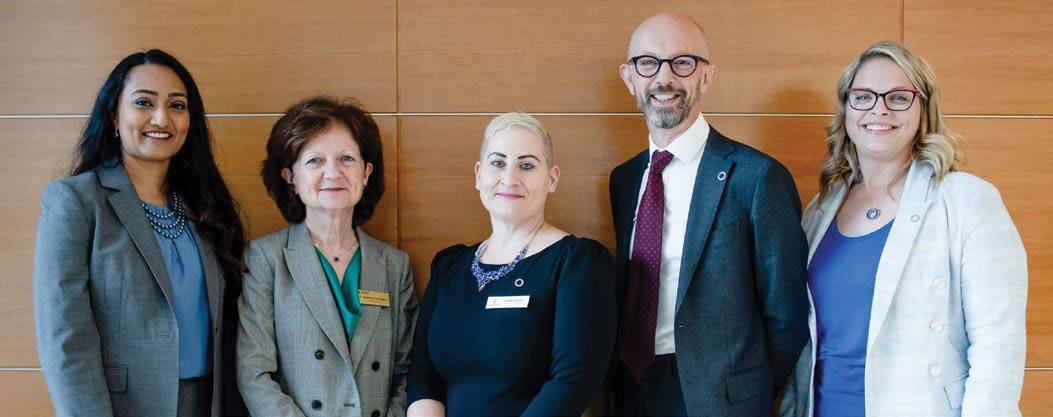
producing cells, a step toward creating a new class of medications for treating diabetes. Now ready for the first clinical trial in humans, this could be one of the most significant diabetes breakthroughs to date, with potential for improved glucose control, reduced insulin dependency and even diabetes remission.
ADI is also home to James Shapiro and his team responsible for the Edmonton Protocol, the world’s largest islet transplant program, which helps people with Type 1 diabetes gain freedom from insulin injections. This program has successfully improved quality of life for hundreds of people with hard-to-control diabetes over the last 20 years.
Hibbard recalls meeting Shapiro in 2015, and was inspired to apply the full force of DRIFCan toward directly funding his team in their pursuit of a cure.
“As a mother of two children with Type 1 diabetes, I see firsthand the effect this disease has on our community, our healthcare system and most importantly, my own family,” says Hibbard. “For the last 20 years, I have had the privilege of supporting cure-based research and together, with DRIFCan’s community of donors, we are providing hope for a cure for families like mine.”
For Burnham, it was heartbreaking to watch her sister struggle to do the things people her age are excited about, like graduating from high school, learning to drive or heading off to college. Burnham and her family witnessed her sister’s struggles with managing her diabetes — the countless appointments, hospital stays, medications and missed opportunities.
Like Hibbard, Burnham has deep personal motivations to see this disease cured, so no child will ever have to experience what her sister did. The Defeating Diabetes campaign was the perfect opportunity for Burnham and ADF to collaborate with other organizations like DRIFCan, united in their common pursuit of a diabetes cure for the world.
“Since that first islet transplant in 1989, the Alberta Diabetes Foundation has been proud to support the work happening
right here in Edmonton,” says Burnham. “The global reach of the research happening at the Alberta Diabetes Institute is amazing — something all Albertans should be proud of. Having the opportunity to collaborate with other funding partners demonstrates our mandate: working together to find a cure.”
Buteau and Shapiro are just two of the many dedicated ADI researchers whose mission to defeat diabetes is made possible by the generosity of DRIFCan, ADF and other donors in support of the Defeating Diabetes campaign. Their work offers hope to more than 1.2 million Albertans living with diabetes, and they credit their success to the vital community and philanthropic support that brings this life-changing research to fruition.
The Defeating Diabetes campaign also supports several other U of A researchers, including Greg Korbutt and Andrew Pepper, who are addressing the supply issue of islets for transplant, and Andrea Haqq, who is exploring therapies to prevent Type 2 diabetes in children.
The Beatrice and Arthur Minden Foundation establishes a Symposium on the Environment and a Graduate Research Fellowship. U of T’s School of the Environment has received a huge boost to its educational and research capacities thanks to the vision and generosity of the Beatrice and Arthur Minden Foundation in establishing the Beatrice and Arthur Minden Symposium on the Environment and the Beatrice and Arthur Minden Graduate Research Fellowship.
The symposium will enable the School of the Environment to bring together international researchers and cross-disciplinary scholars on an annual basis to discuss and debate the most urgent environmental issues. “We hope that this annual event will catalyze meaningful new collaborations on key environmental issues, leading to new ideas and insights, proposals for workable solutions and plans for future interactions,” says the school’s director, Kimberly Strong.

The graduate research fellowship, meanwhile, will support PhD students by enabling their participation in conferences, summer schools, fieldwork and collaborative visits to research groups across Canada and around the world. “These fellowships are intended to make a real difference to our students,” Strong says, “giving them new opportunities to expand and strengthen their research on environmental issues.”
The Beatrice and Arthur Minden Foundation was established by Beatrice Minden in honour of her late husband, Arthur, a lawyer and philanthropist who co-founded the Muscular Dystrophy Association of Canada in 1954.
Arthur came to Canada from Zhitomir, then part of the Russian
Empire, with his family in 1912 at the age of two. The first in his family to go to university, Arthur attended the University of Toronto (BA 1932) and Osgoode Hall before setting up his law practice. Well-known for his enthusiasm, good spirit and generous character, he was heavily involved in the community, and in Toronto’s arts and Jewish communities, in particular. Following his death in 1966, Beatrice set out to continue his philanthropic work and legacy through the foundation, which has supported a range of activities, from university scholarships in Israel to cultural events and hospitals in Toronto.
After Beatrice passed away in 2009, their children, George, Robert, Jo-Ann and Cynthia continued the work of the foundation. In each of the four years since their mother’s death, the siblings took turns deciding which activities the foundation would support, after which time they decided to find a single cause to support. Earlier this year, they settled on the School of the Environment.
“We wanted to find a home for the foundation, a way to honour our parents, their spirit and their legacy. We were all excited about the new School of the Environment at U of T and felt this was a great fit: the city in which our parents spent their lives, the university that so inspired our father and the potential to develop cutting-edge solutions to some of the most pressing problems humanity is facing regarding climate change,” says Cynthia, whose three siblings attended U of T. “My parents had a passion for education, and my father had a tremendous appreciation for how U of T altered the course of his life in such a profound and significant way. It was pivotal for him to go to U of T and he was always grateful for that opportunity.”
Cynthia says that she and her brothers and sister all feel very strongly about supporting solutions to ecological problems. A longtime resident of Denman Island, British Columbia, she’s been a concerned citizen who has protested clear-cut logging in Clayoquot Sound and other local causes that spotlight the exploitation of natural resources. “Environmental studies are something that we all support and it is important to us to direct the foundation’s capital to where it would have the greatest impact. I think we’ve found that at U of T.”
The School of the Environment was established in 2012 to leverage the enormous breadth and depth of environmental teaching and research expertise within U of T’s Faculty of Arts & Science. The school offers undergraduate programs in environmental studies and environment and science. The school also partners with other departments and programs at U of T to offer a range of collaborative undergraduate specialists, majors and minors, involving chemistry, geography, earth sciences, human biology, physics, philosophy and others. At the graduate level, interdisciplinary collaborative programs in environmental studies, as well as in environment and health, are offered in partnership with 20 other units at the University, with other new programs in development.
“We love the idea of supporting new and ongoing research and teaching in this area, especially given the alarming issue of climate change,” Cynthia says. “And I’m pretty sure my parents would feel that it’s an important cause, as well.
Growing up in Toronto’s Parkdale neighbourhood, Amir Hussain never considered academia as a career path. But from the day he first set foot on U of T’s St. George campus, he was hooked. “I fell in love with the place,” he says of his days at University College. After completing an undergraduate degree in psychology at U of T in 1987, Prof. Hussain went on to a master’s and PhD in religious studies. Today, he is a professor of theological studies at Loyola Marymount University in Los Angeles.
In 1987, Prof. Hussain met Shannon Hamm, a fellow don at the Sir Daniel Wilson residence and psychology doctoral student. They married in 1989. But tragedy struck the young couple in the summer of 1992 when Shannon passed away suddenly from a pulmonary embolism. “You learn from that — life can throw you into unexpected circumstances,” says Prof. Hussain.
After Shannon passed away, Prof. Hussain wanted to ensure that he made provisions to recognize who she was. Using some of the proceeds of her life insurance, Prof. Hussain set up the Shannon L. Hamm Award in Peace and Conflict Studies (he also set up scholarships in her name at the University of Manitoba

as well as the two Los Angeles institutions where he would go on to work). “It was important to me to do something in Toronto to honour her. That little bit of life insurance provided the means.”
Prof. Hussain has continued to donate to the U of T scholarship since that time. After living in the U.S. for several years, Prof. Hussain was approached by U of T Gift Planning staff to consider setting up a bequest that could augment the scholarship he created. At first, he thought the idea was “ridiculous” — he thought that bequests are set up by only wealthy individuals. But staff explained the many other ways to create legacy gifts. “I thought that as much as I would love to be able to give back a large sum of money to U of T, I don’t have those means. The gift planning staff asked if I had considered donating a small Canadian RRSP fund. Since I don’t plan to come back to Toronto to retire, this made sense.”
He has named U of T the beneficiary of the RRSP and an additional Canadian life insurance policy.
Prof. Hussain knows well the value of legacy gifts. As a student, he himself received a scholarship set up by a donor who had passed away long before Prof. Hussain arrived at U of T that fall of 1983. “I’m happy that I can recognize Shannon and the person she was by leaving a legacy to this place that was so important to us.”
All Canadian nonprofits and charities with at least 10 employees are eligible to participate and the program is held annually to support a continuous improvement model for your organization.
“We highly recommend the NEOC program for the insights it can o er to nonprofits!”
CMHA York Region and South Simcoe
“This included an anonymous online employee survey done by NEOC, which gathered more and higher quality responses than the in-house surveys we did in the past.”
UNICEF Canada
“NEOC allows small organizations like ours to participate.”
Alberta Retired Teachers Association
Learn more about the Canadian Nonprofit Employer of Choice Award neoc.ca/overview



Wear your heart on your sleeve. Wear your humanity on your chest.
In
2020 Toronto Raptors
President and Giants of Africa co-founder Masai Ujiri and menswear brand Harry Rosen collaborated on a project focused on raising funds for charity, bringing new Black designers into the famed retailer, and ultimately reminding the world that there’s more that unites us than divides us. At the center of the collaboration was the idea of humanity, expressed through fashion — one of the many ways people choose to show who they are. A sevenpiece athleisure capsule designed by Ujiri and Canadian designer Patrick Assaraf features the word ‘HUMANITY’ in Ujiri’s handwriting.
“This year we have been consumed by the twin pandemics of COVID and racism. We need to find a cure for both, urgently,” Ujiri said at the time. “No one expects a t-shirt to change the world, but each of us committing to look at one other as human beings and really see the humanity in everyone is a good start. See the word. Have the conversation. Really talk to each other. Remember that our humanity is the first thing we all have in common. Once we recognize that we share that connection, we can find others.”
Net proceeds from the sale of the collection went to Black Youth Helpline, an organization which provides young people with access to culturally relevant, hiqh quality services and resources in their local community. Helpline’s diverse programming includes crisis counselling, strategies for staying in school and support for families, schools and communities.
“We are incredibly grateful to Masai Ujiri and Harry Rosen for their steadfast commitment to youth from Canada’s underrepresented backgrounds and
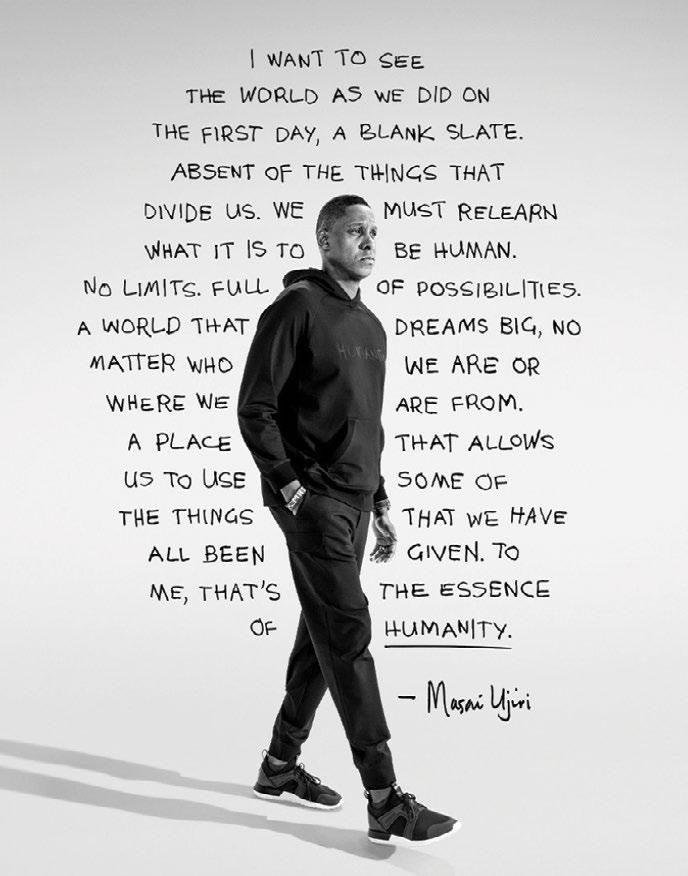
under-resourced communities.” said Barbara Thompson, Founder & Executive Director of Black Youth Helpline. “Now more than ever, there is a need to support and empower Canada’s disadvantaged youth. This transformative partnership will propel us as we develop and execute new strategies for education, and community well-being in support of keeping Canada’s vulnerable youth on track to successful futures.”
Sparked by the collaboration and inspired by Harry Rosen’s commitment to diversifying its shelves, the brand has signed George Sully, the creator of Sully and Son, and the founder of Black Designers of Canada. Beginning in the spring, Sully will be among a growing roster of BIPOC designers offered by the fashion retailer.
“Events of the last year have impressed upon us that the status quo is not good enough and that we all need to do better” said Larry Rosen, CEO of Harry Rosen, “From working with inspiring role models to opening more doors of opportunity, we are committed to making the Canadian
fashion industry more equitable.”
The HUMANITY capsule collection was exclusively available on HarryRosen.com
Masai Ujiri is the first and only Africanborn President and General Manager of a professional sports franchise in North America — the National Basketball Association’s Toronto Raptors. In 2019, Masai led the Raptors to their first-ever NBA Championship and the first NBA Championship won by a team outside the United States in NBA history. Born and raised in Nigeria, with a deep passion for basketball, Masai began to pursue a career as an executive when his professional basketball career came to an early end. In 2003, Masai co-founded the Giants of Africa (GOA) organization, based on the idea of using basketball as a means of educating and enriching the lives of African youth — both boys and girls.
Sometimes the best things in life are the simplest, or as Mies van der Rohe so eloquently put it, “less is more.” The line of luxury basics designed by Patrick Assaraf embodies his many schools of thought from over three decades of a rich career in menswear fashion. Inspired by the European elegance and tailoring of Italian menswear, the Patrick Assaraf line is a contemporary take on luxury, comfort, and the ease that is the central principle of what he believes the ethos of luxury to be. The simplicity in his silhouettes allows for the elevation of what he calls “extravagance.” This extravagance exists in the progressive, high end fabrication of Peruvian cotton, choice fabrics, and in the novelty of a vibrant color palette. At the heart of this brand is integrity, one that Patrick Assaraf gives back to his customers, while presenting them with effortless basics, with elegance and simplicity.
University Health Network celebrates people, progress
University Health Network (UHN) proudly asserts its position as Canada’s #1 hospital with the launch of its new UHNITED campaign, the first campaign in its history. Departing from traditional accolades, the campaign spotlights the individuals driving transformative change within UHN, emphasizing their collective efforts to redefine the standards of health care excellence.
“At UHN, our success is rooted in our people—the dedicated teams who tirelessly work together to challenge the norms of health care,” remarks Dr. Kevin Smith, President and CEO of UHN. “Through the UHNITED campaign, we celebrate our exceptional staff and their unwavering commitment to innovation, discovery and patient care.”
UHN’s claim to the #1 hospital in Canada’s is substantiated by a myriad of achievements and accolades identified in the UHNITED campaign. Renowned as one of the top three hospitals globally, UHN stands as the world’s #1 publicly funded hospital, a testament to its unwavering dedication to advancing medical science and patient care.
Moreover, UHN has maintained its status as Canada’s foremost research institution for an impressive 13 years thanks to its groundbreaking contributions to medical research. With a research budget of $475M in 2023, UHN continues to push the boundaries of scientific discovery, pioneering innovations that have reshaped the landscape of modern medicine.
Integral to UHN’s success is the unwavering support of its community, whose generosity enables leading edge research, education of future leaders and the best in patient care initiatives. Philanthropy plays a pivotal role in
fueling UHN’s transformative endeavors, providing critical resources and funding for projects that push the boundaries of medicine. Some of these initiatives include the development of a tool to help cardiac patients remotely monitor their symptoms, the use of AI technology to improve the likelihood of successful organ transplantation, the use of remote deep brain stimulation technology to treat Parkinson’s disease, and much more.
Through philanthropic partnerships, UHN harnesses the collective power of its community to drive progress and effect positive change. By investing in UHN’s research initiatives, individuals and organizations become catalysts for ground-breaking discoveries that have the potential to transform lives and shape the future of health care.
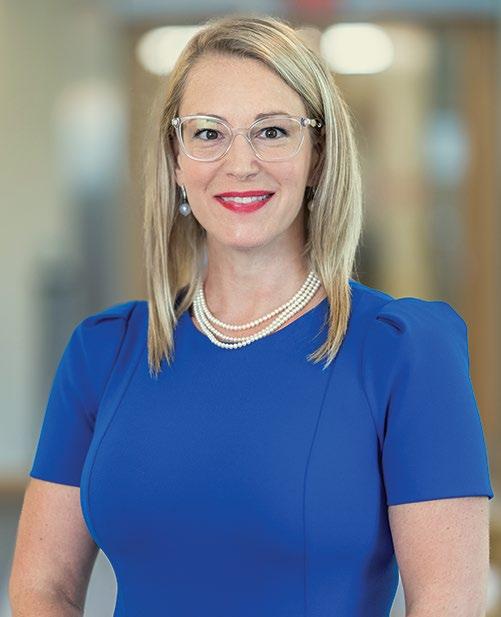
Julie Quenneville, CEO of UHN Foundation, underscores the importance of community support in driving UHN’s mission forward, emphasizing, “When our community is UHNITED, we have
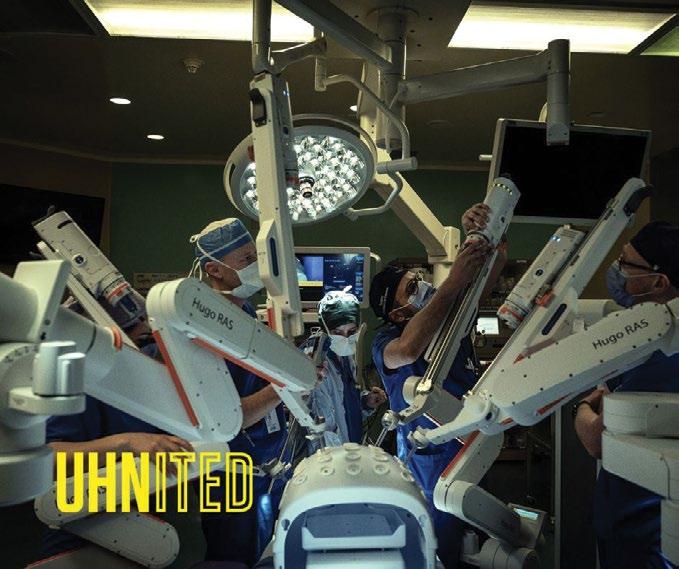
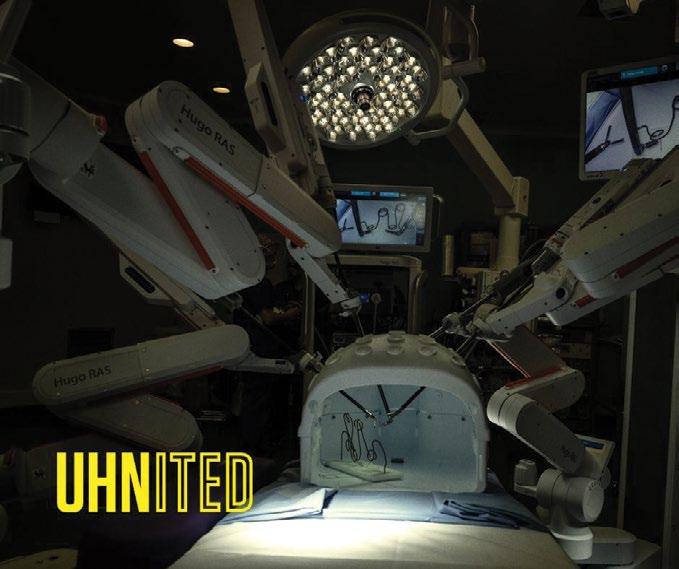

the power to redefine the future of health care.” By uniting as a community, Canadians can amplify their impact and advance UHN’s mission to change the status quo of health care not just here in Canada but around the world.
She points out that, as UHN charts a course toward a future defined by innovation and excellence, the UHNITED campaign serves as a rallying cry for community unity and collective action. “Together, we have the power to drive progress, accelerate medical breakthroughs, and improve the health and well-being of individuals around the world. Through unity and unwavering dedication, UHN continues to lead the charge toward a healthier, brighter future for all.”
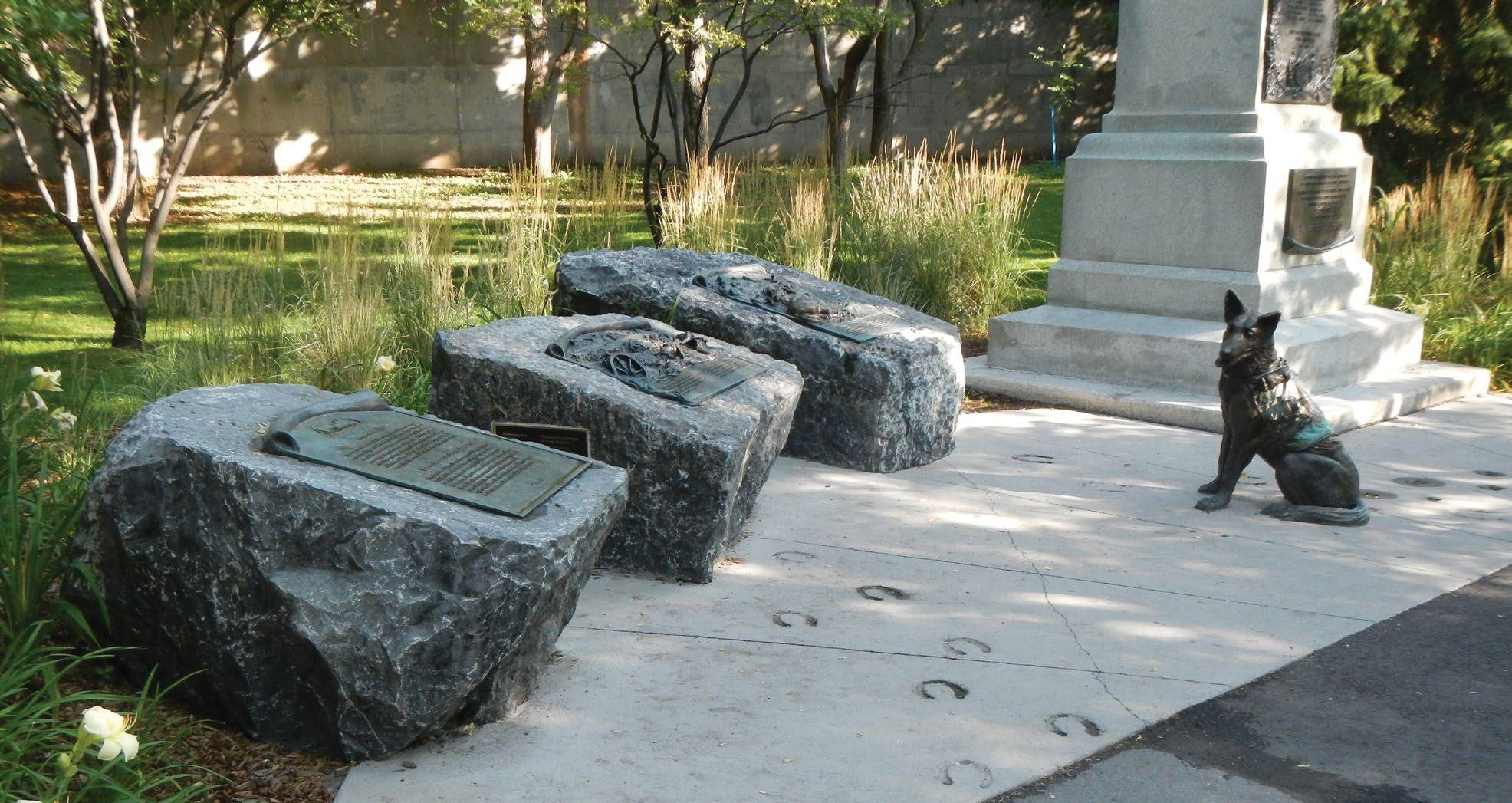
This memorial includes three plaques and a statue, as well as animal footprints in the cement. For centuries, animals have demonstrated an enduring partnership with humans during times of war. They have served as means of transportation, beast of burden, messengers, protectors and mascots. Still today, dogs use their unique, sharply tuned instincts to detect mine clusters, and conduct search and rescue operations. We remember the contribution and sacrifice of all animals.
Relentless shelling in the First World War (1914-1918) left huge craters of mud and sewage. Horses and mules could best navigate these difficulties
Paid Advertisement
Horses carried soldiers and pulled gun carriages, supply wagons and ambulances. Many paid the ultimate price and their loss was mourned by those they served.
The Animals in War Dedication honours animals that served alongside their human comrades in war. It is symbolically set next to the South African War Memorial, a battle for which Canada supplied 50,000 horses for mounted troops. Both commemorations are located in Confederation Park in downtown Ottawa. The footprints of dogs, horses and mules are stamped into the concrete of the Animals in War Dedication, representing the marks they left on the battlefield. Three bronze plaques depict animals in war and provide interesting facts about their roles, their sacrifices, and their unwavering loyalty. Among the roles animals have played in war:
Mules: Carried panniers and artillery.
Horses: Carried mounted troops and hauled field guns.
Carrier pigeons: Delivered messages to specific destinations.
Dogs: Used as messengers, medical assistants, bomb detectors, and search and rescue workers.
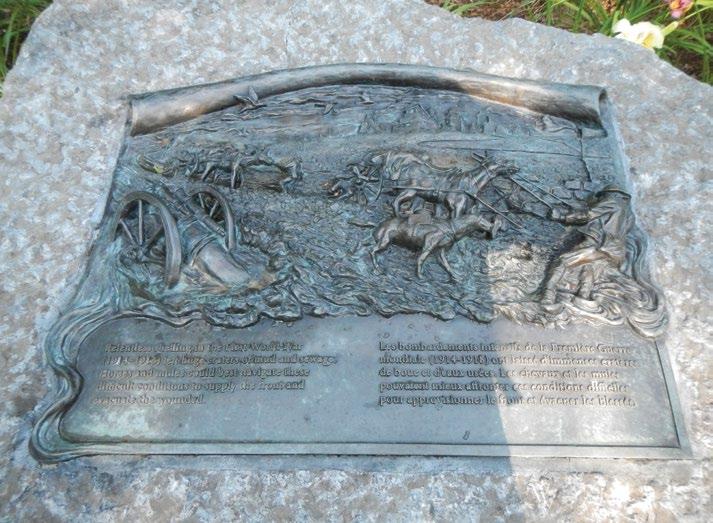
A bronze, life-sized statue of a medical service dog stands guard over the dedication. It is wearing an authentic replica of a medical backpack that war dogs used during the First World War. Canada’s military still employs dogs to this day.
Lloyd Allan Swick, a veteran of the Second World War and the Korean War, was the driving force behind the Animals in War Dedication project, which was realized in 2012 by Canadian artist and sculptor David Clendining.
Other nearby markers. At least 8 other markers are within walking distance of this marker. South African (Boer) War Memorial (here, next to this marker); Canadian Airmen Lost Over Poland (within shouting distance of this marker); Oscar Peterson (about 150 meters away, measured in a direct line); Marion Dewar Plaza (about 180 meters away); Brigadier Andrew Hamilton Gault DSO, OBE, ED, CD. (approx. 0.2 kilometers away); The National War Memorial (approx. 0.3 kilometers away); The Rideau Canal (approx. 0.3 kilometers away); Rail Heritage in the Capital (approx. 0.3 kilometers away).

1 2 3 4 5
Heather Norris has been the President and CEO of the Ottawa Network for Education since 2019. Last year, the Ottawa Network for Education invested more than $4 million in programs that provide targeted learning support, improve student well-being, and help secondary students make informed choices and transition successfully to post-secondary studies and fulfilling careers. Heather was previously CEO of Northumberland United Way in Cobourg, Ontario, but returned to her hometown of Ottawa and to join and lead ONFE. With 20 years of experience in the healthcare and non-profit sectors, Heather has vast expertise in operations management, fundraising, government relations, human resources and volunteer management, board governance and public speaking. She holds a Master of Philanthropy and Non-profit Leadership Degree from Carleton University. Heather’s high energy and experience working with leaders across the public, private and nonprofit sectors has been a welcome addition to ONFE. Heather has been working had to build on the incredible foundation in place at the Ottawa Network for Education and leading the organization to future success.
Marlow Gingerich is a Gift Planning Consultant with Abundance Canada. Located in the Waterloo, Ontario office, as a seasoned gift planning consultant, Marlow brings creative ideas and solutions for clients to consider when constructing a strategic Generosity Plan™. He enjoys his front-row seat on local charitable giving activities as well as the privilege of inspiring donors who want to make a positive difference in the world. Serving his community is paramount to Marlow, as such he volunteers with the Tavistock Tornadoes Soccer Club and serves as a board member with the Waterloo Wellington Fundraising Executives. He is affiliated with the Canadian Association of Farm Advisors, the Centre for Family Business, Waterloo Wellington Estate Planning Council and the Canadian Association of Gift Planners. Marlow is also an avid gardener, with harvest time being the highlight of his year.
Chantal Dompierre is Director of Major and Planned Gifts for The Gatineau Health Foundation. Her mission is to raise funds to have an impact on the well-being and health of the Outaouais community in partnership with the Outaouais Integrated Health and Social Services Center. Her considerable experience includes senior roles at Fulbright Canada, CHEO Foundation, Ottawa Children’s Treatment Centre (OCTC) Foundation, Physiotherapy Foundation of Canada and the University of Ottawa. The Outaouais region is prized just as much for its sprawling parks, rivers and lakes as for its thriving population and its quality of life that is the envy of many regions. This idyllic backdrop is also home to another, grimmer reality, according to GHF: the continuing legacy of historic underfunding in health and social services. In recent years, the Outaouais region has lagged far behind in terms of public funding for health care, which has had an alarming impact on the quality of life of its population: long waiting times, limited access to specialist services, obsolete infrastructure, demotivated staff, not to mention the difficulty of meeting the growing needs of an ageing population.
Marjorie Joly is Hospice Renfrew’s Executive Director, located in Renfrew, Ontario. Marjorie also has a Northern Ontario connection, but has lived in the Valley the last twenty-five years. One of the challenges Joly faced almost immediately when she took the position in 2020 was the bite COVID-19 had taken out of fundraising opportunities. While the key Hike for Hospice was cancelled earlier that year, Marjorie and her team pulled together their annual Edward Jones Hospice Classic Golf Tournament. In 2022, Hospice Renfrew successfully achieved Hospice Palliative Care Ontario (HPCO) Accreditation for its Hospice Residence Program with an impressive score of 92.8 per cent. More recently, Hospice Renfrew has been looking for volunteers to join their Board of Directors. Hospice Renfrew looks for help to provide high quality palliative care close to home. Joly said they’ve taken in applicants from all walks of life in the past. She adds that expertise in healthcare, governance, finance, or fundraising will go a long way to earning a spot on the board but isn’t a must-have.
Anna Nelson is a Consulting CFO at Humanity Financial Management, in West Vancouver, BC. Humanity Financial fights for social justice, environmental sustainability, and economic inclusion and equity. The firm is the first accounting firm in Canada to become a Benefit Company. Nelson offers Consulting CFO services to non-profit and social purpose organizations, specializing in business reorganizations and transformations, capital redevelopment, and government fund development. She is an accomplished financial executive with a proven track record of strategic leadership in complex environments undergoing transformation. As Chartered Professional Accountant with a Bachelor of Commerce degree, she is a board member and Treasurer of Herowork Canada, and is a former board member and Chair of the Board of Directors of Distress Centre Calgary.





